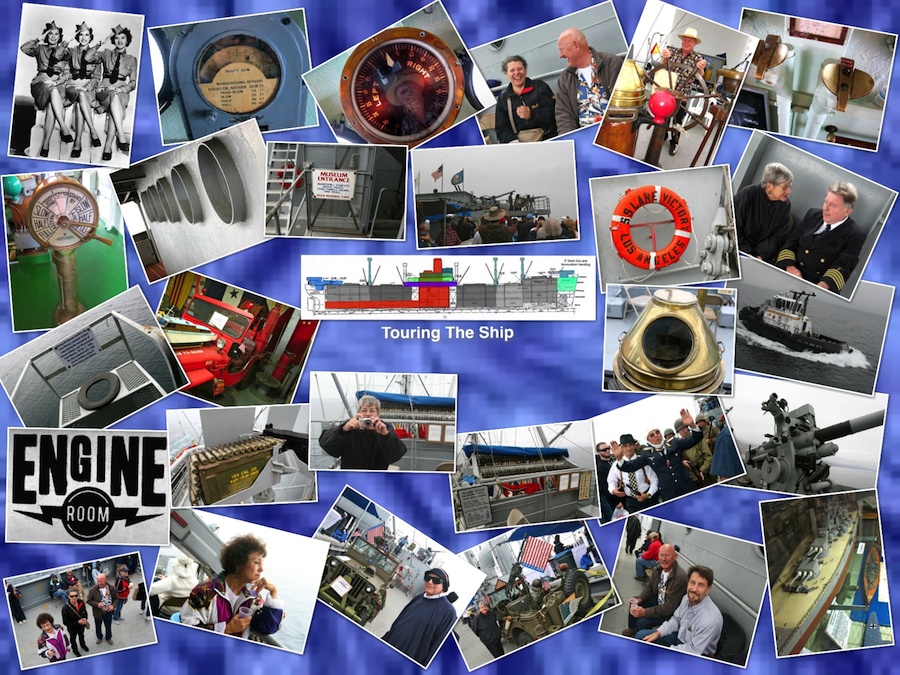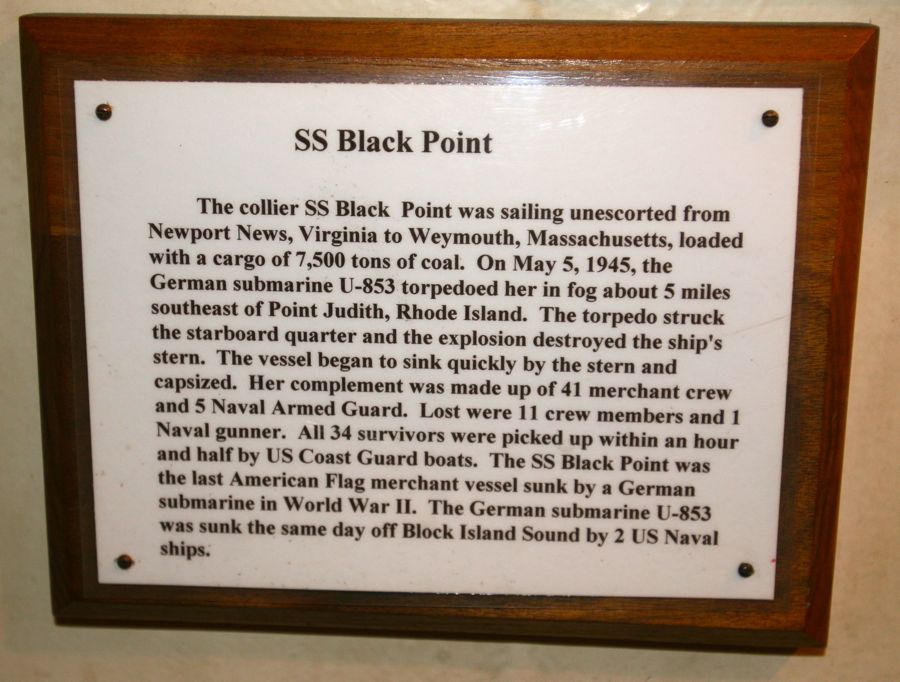Time To Explore The Lane Victory (Page Four)
Put On Your Hiking Shoes And Let's Go Exploring
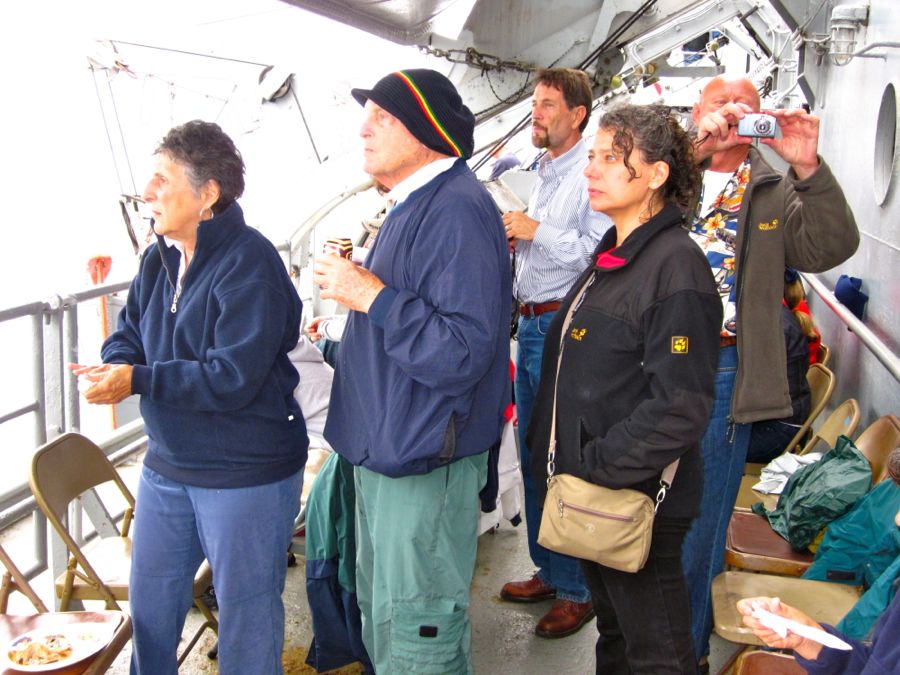
Someone spotted dolphins
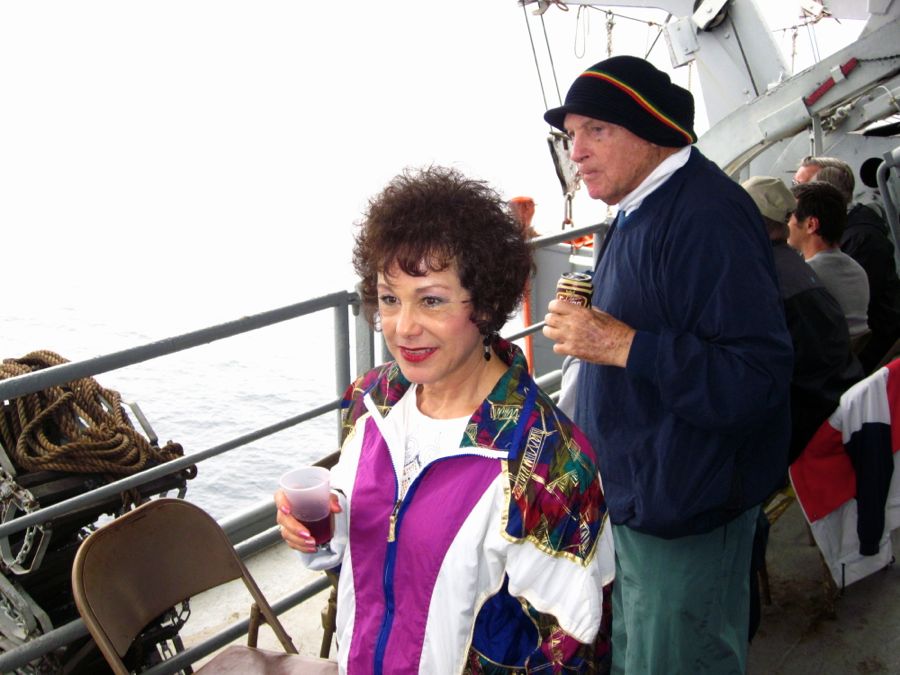
The wine light is lit... and we are trying to get into the same condition
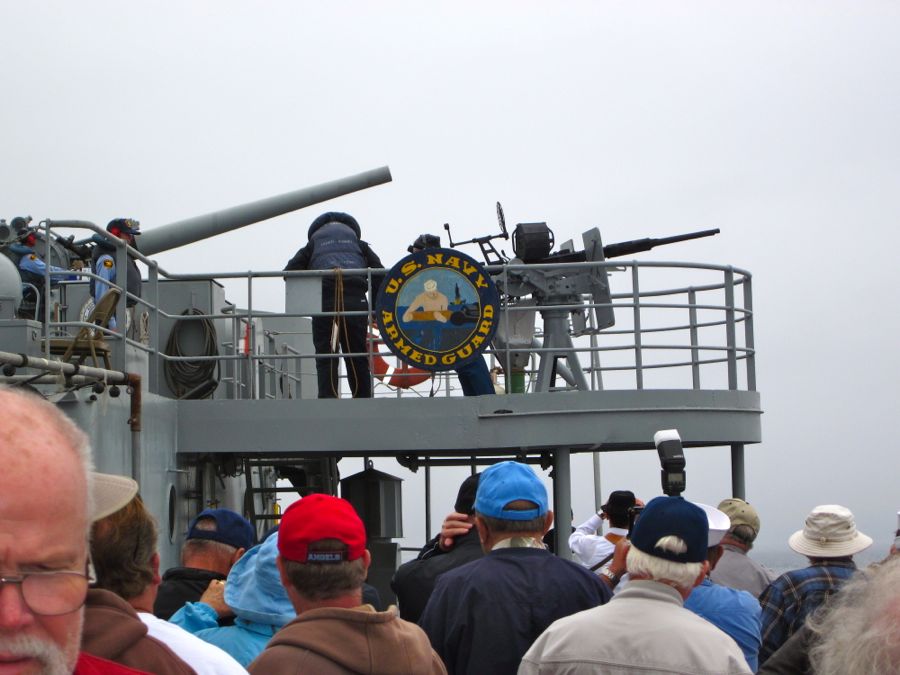
The gun demo is about to start up so let's head for the Bridge
Ladders And Ladders Later We Are On The Bridge (Wheel House)

Did You Know? - The bridge of a ship is the room or platform from which the ship can be commanded. When a ship is underway the bridge is manned by an OOW (officer of the watch) aided usually by an AB (able seaman) acting as lookout. During critical manoeuvres the captain will be on the bridge supported, perhaps, by an OOW as an extra set of hands, an AB on the wheel and sometimes a pilot if required.
Wheelhouses are the small enclosed parts of a bridge which historically held the ship's steering wheel. Today, ship bridges do not have a separate wheelhouse.
Traditionally, sailing ships were commanded from the quarter deck, aft of the mainmast. With the arrival of paddle steamers, engineers required a platform from which they could inspect the paddle wheels and where the captain's view would not be obstructed by the paddle houses. A raised walkway, literally a bridge, connecting the paddle houses was therefore provided. When the screw propeller superseded the paddle wheel, the bridge was retained.
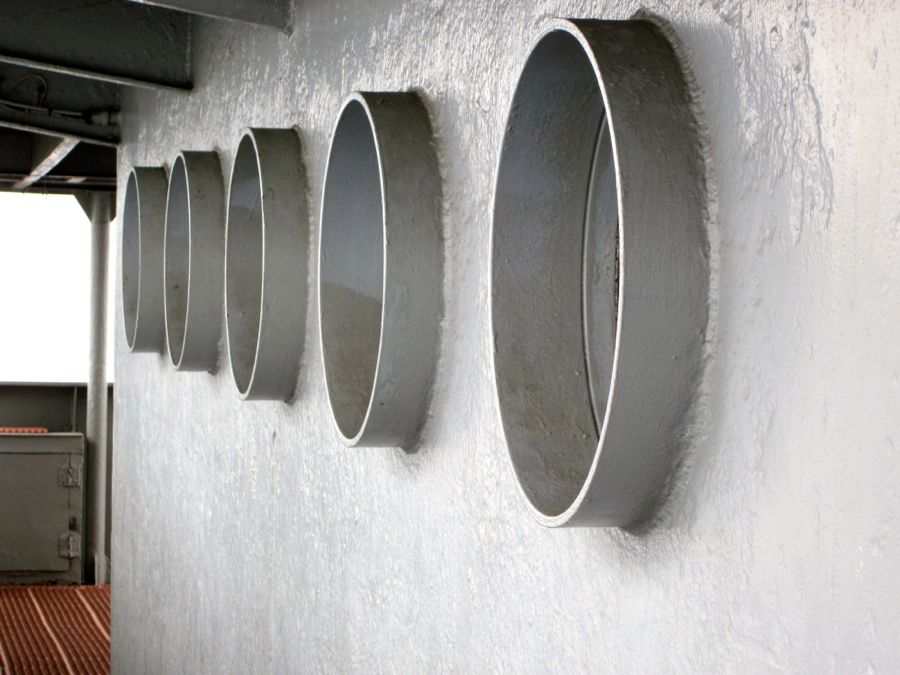
The bridge's view is limited by the portholes
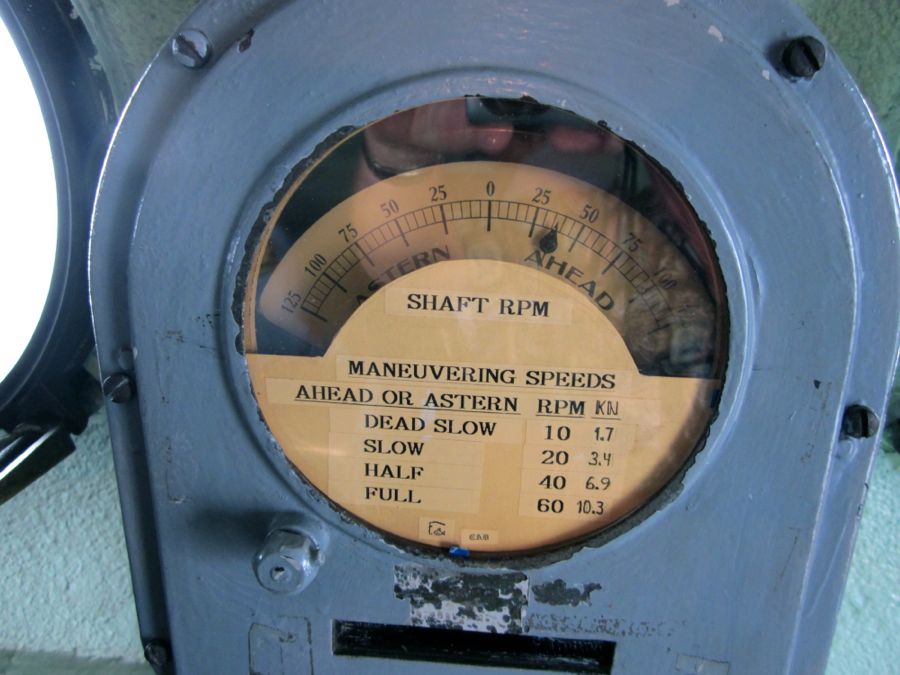
With one boiler out the top speed is reduced... The shaft speed is about 40 RPM
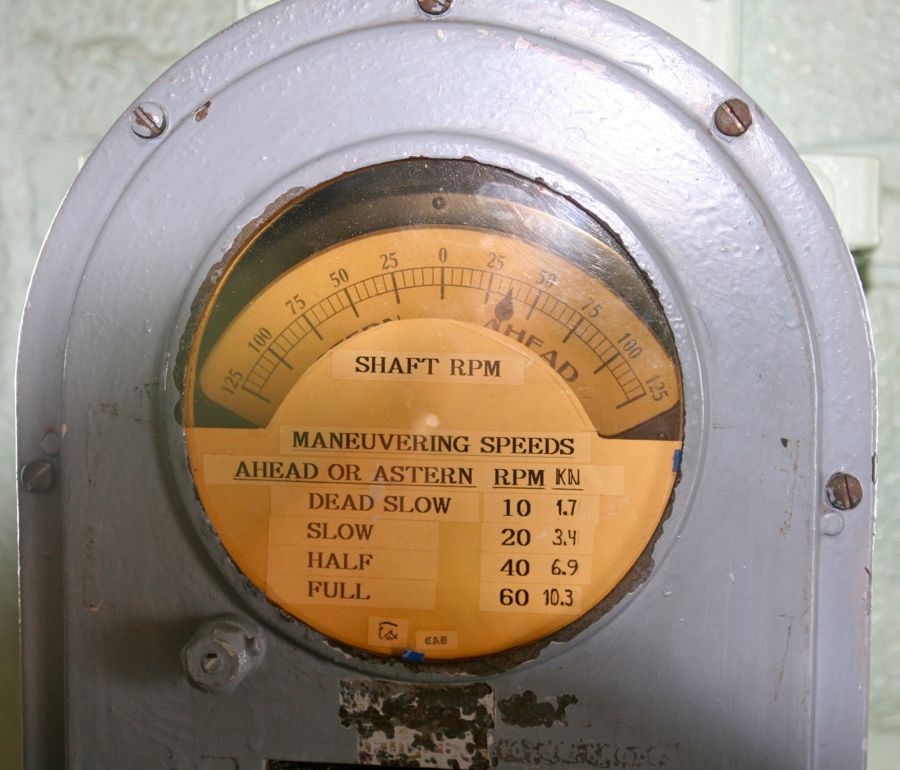
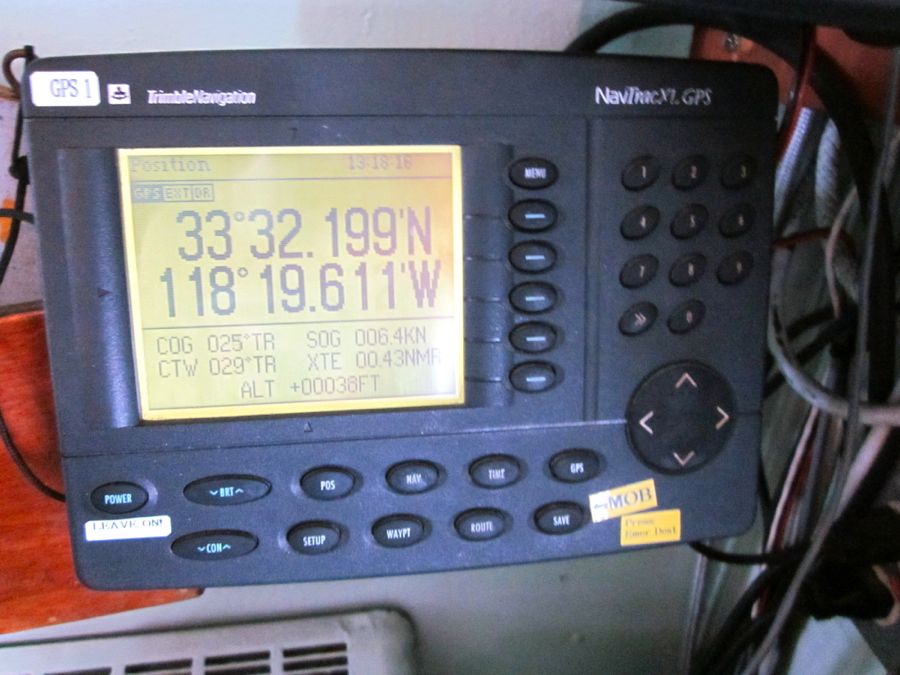
GPS was not in the bridge during WWII
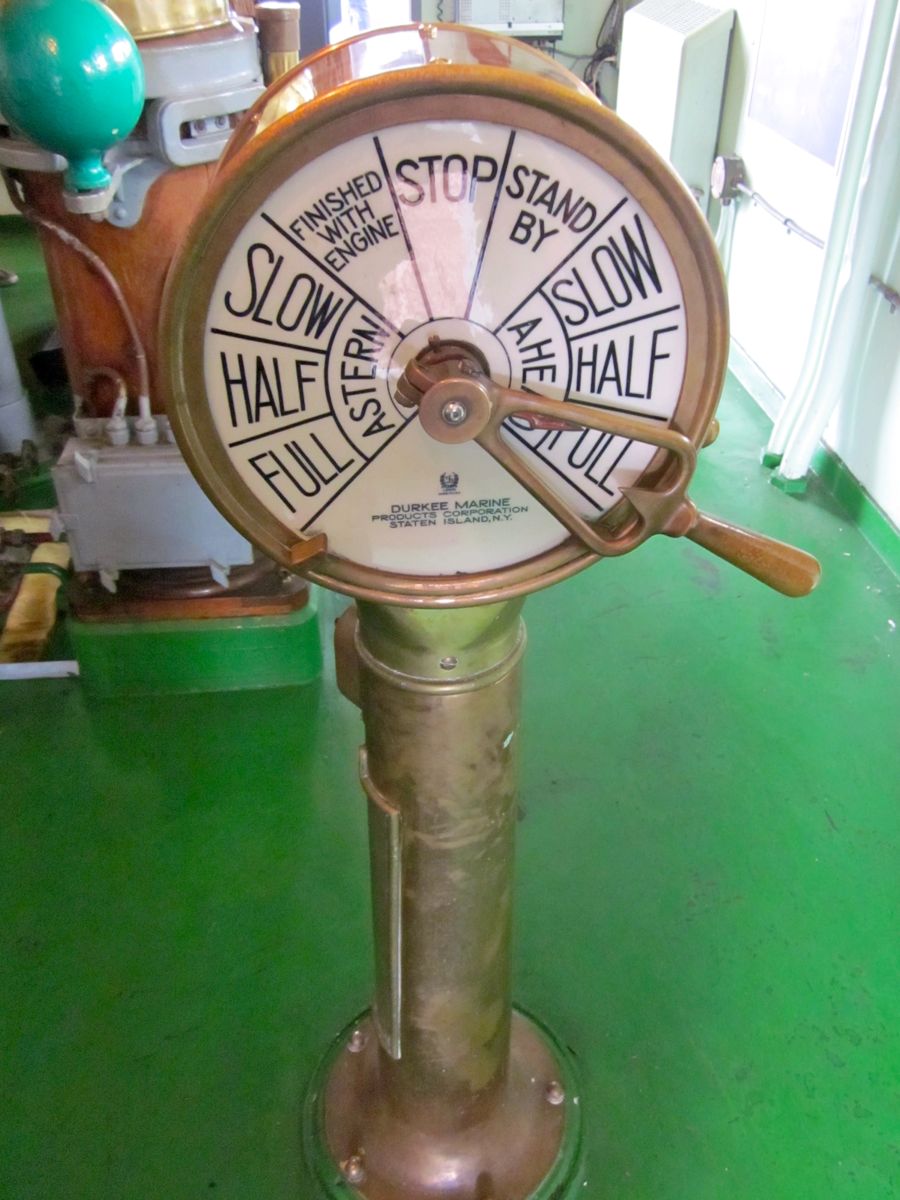
The Chadburn or Engine Order Telegraph
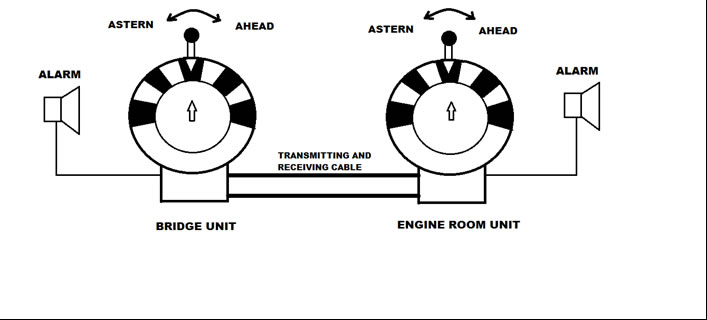
Did You Know? - An engine order telegraph or E.O.T., often also chadburn, is a communications device used on a ship (or submarine) for the pilot on the bridge to order engineers in the engine room to power the vessel at a certain desired speed. In early vessels, from the 19th century until about 1950, the device usually consisted of a round dial about nine inches (~20 centimeters) in diameter with a knob at the center attached to one or more handles, and an indicator pointer on the face of the dial. Modern E.O.T.s on vessels which still use them use electronic light and sound signals.
Traditional E.O.T.s required a pilot wanting to change speed to "ring" the telegraph on the bridge, moving the handle to a different position on the dial. This would ring a bell in the engine room and move their pointer to the position on the dial selected by the bridge. The engineers hear the bell and move their handle to the same position to signal their acknowledgment of the order, and adjust the engine speed accordingly. Such an order is called a "bell," for example the order for a ship's maximum speed, flank speed, is called a "flank bell."
For urgent orders requiring rapid acceleration, the handle is moved three times so that the engine room bell is rung three times. This is called a "cavitate bell" because the rapid acceleration of the ship's propeller will cause the water around it to cavitate, causing a lot of noise and wear on the propellers. Such noise is undesirable during conflicts because it can give away a vessel's position
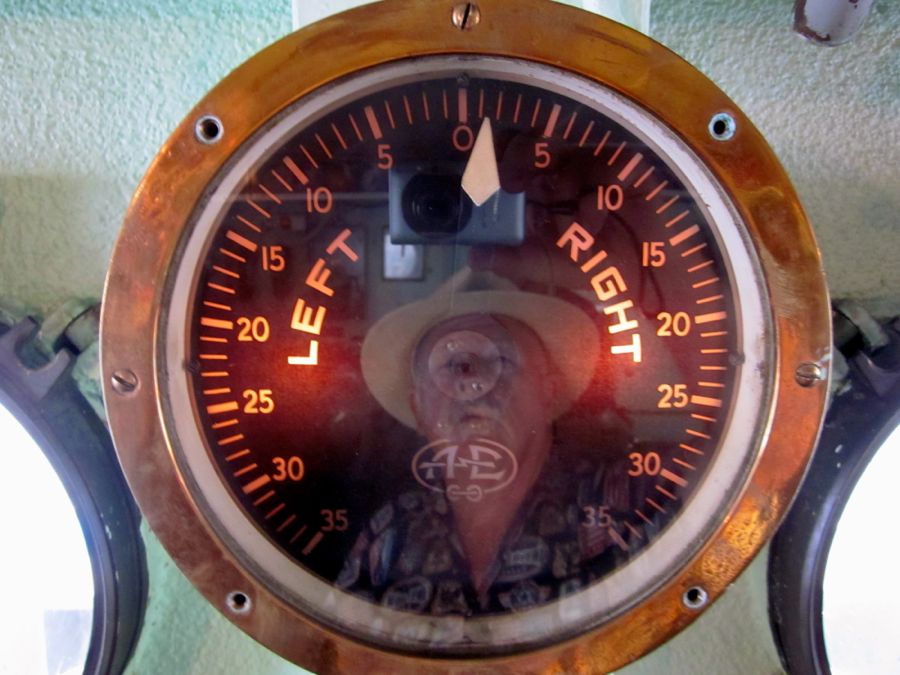
Rudder position is relayed to the bridge which allows the bridge to know what angle the rudder is set at.
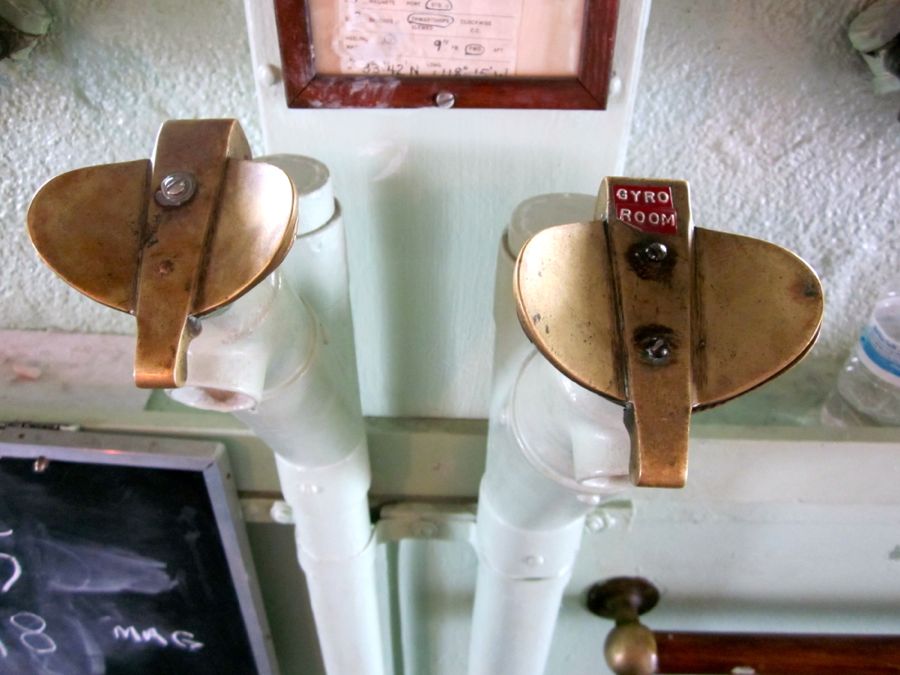
Speaker tubes... replaced electronics... reliably
Did You Know? - A speaking tube or voicepipe is a device based around two cones connected by an air pipe through which speech can be transmitted over an extended distance. While its most common use was in intra-ship communications, the principle was also used in fine homes and offices of the 19th century, as well as fine automobiles, military aircraft, and even locomotives. For most purposes, the device was outmoded by the telephone and its widespread adoption. This device was also known as a "megaphone", but that use has since become superseded.
One disadvantage of voice pipes is that they may breach the integrity of watertight spaces. This led to the introduction of shut-off valves on both ends of voicepipes to prevent water from a flooded compartment from entering other compartments via its voicepipes.
Permanently fitted, rigid voice pipes are still in use and are generally covered with heavy lids to avoid ingress of water. The speaker has to place the mouth in the "horn" or bell-shaped end of the pipe and the receiver has to 'bend an ear' to hear what is being said.
Voice pipes have generally been replaced by sound powered telephones. Even on modern ships, however, they may still be found linking wheelhouse and binnacle for communication of magnetic compass heading to the helmsman in the event of a blackout.
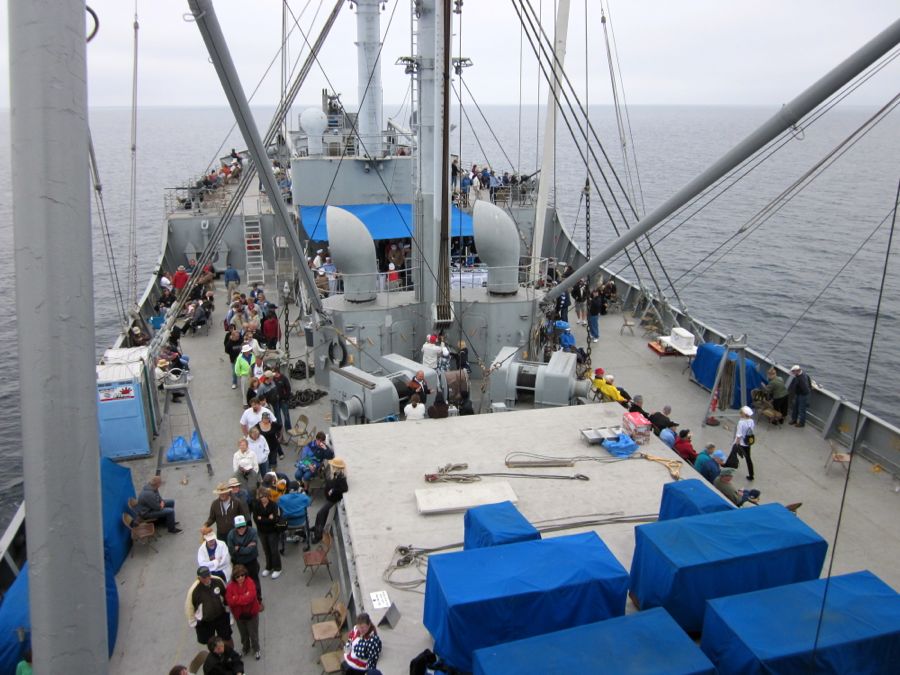
View from the bridge
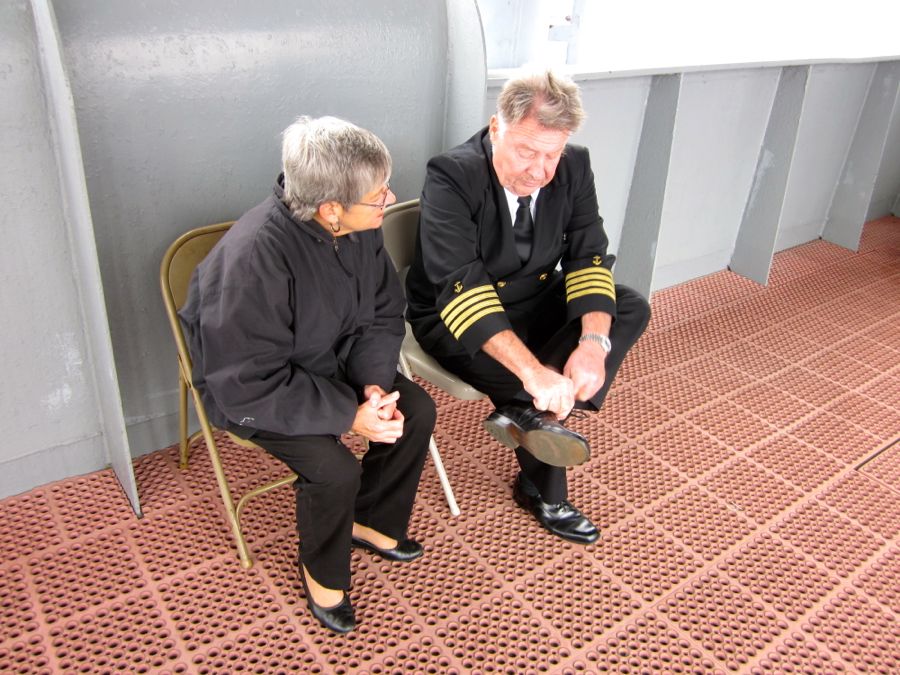
Sue visited with the Captain (Master)
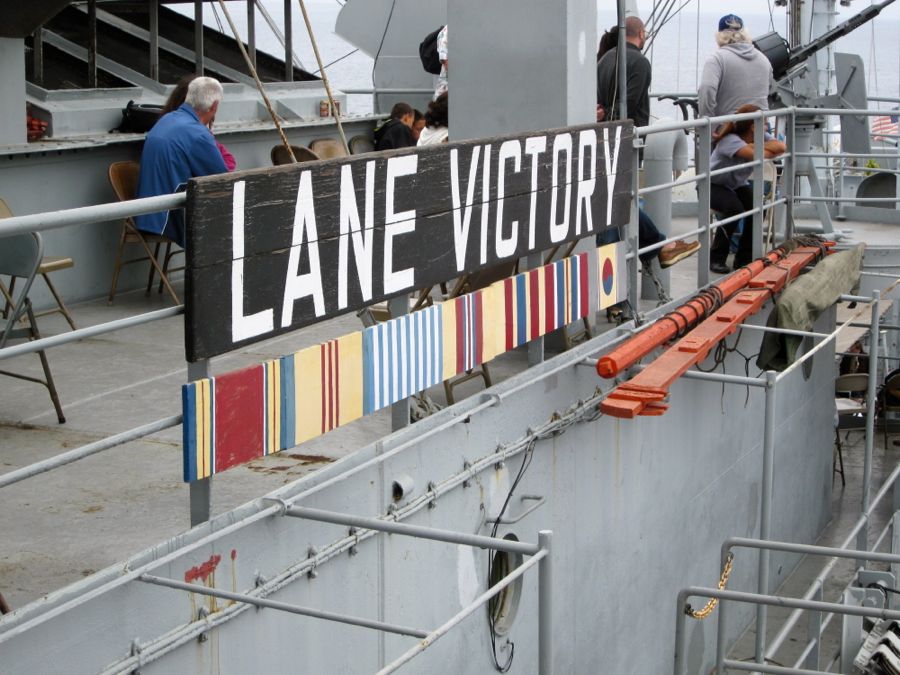
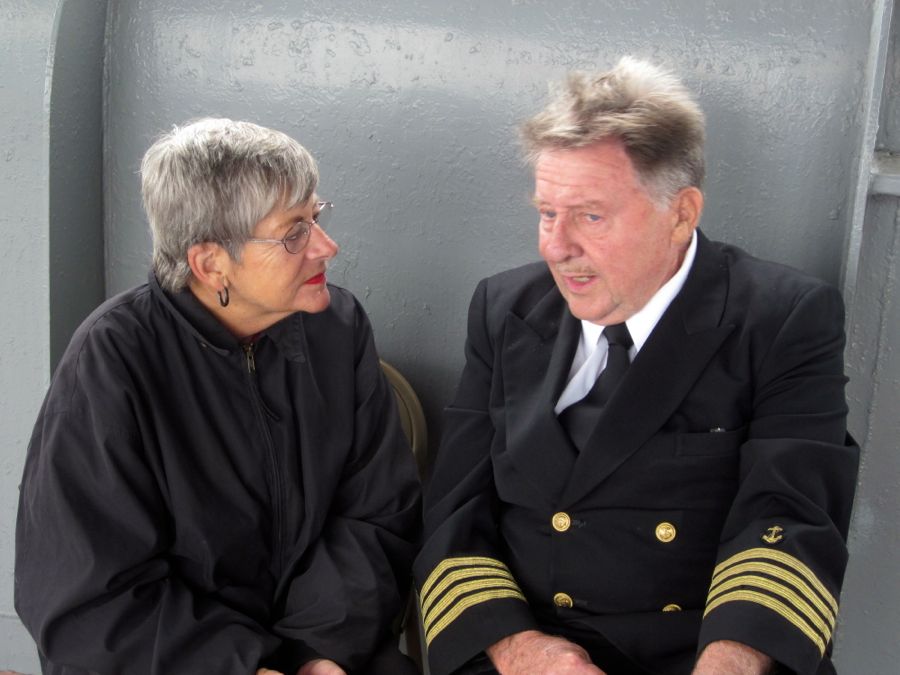
He has been sailing as a Master for 36 years
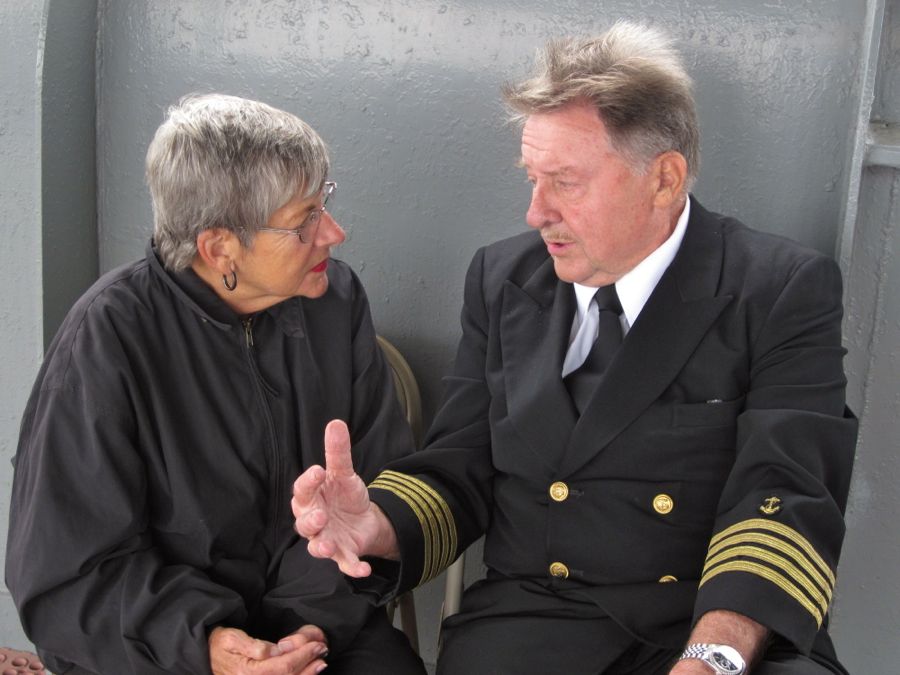
He explained all the freighters he has mastered in every ..ithole in the world delivering American aid
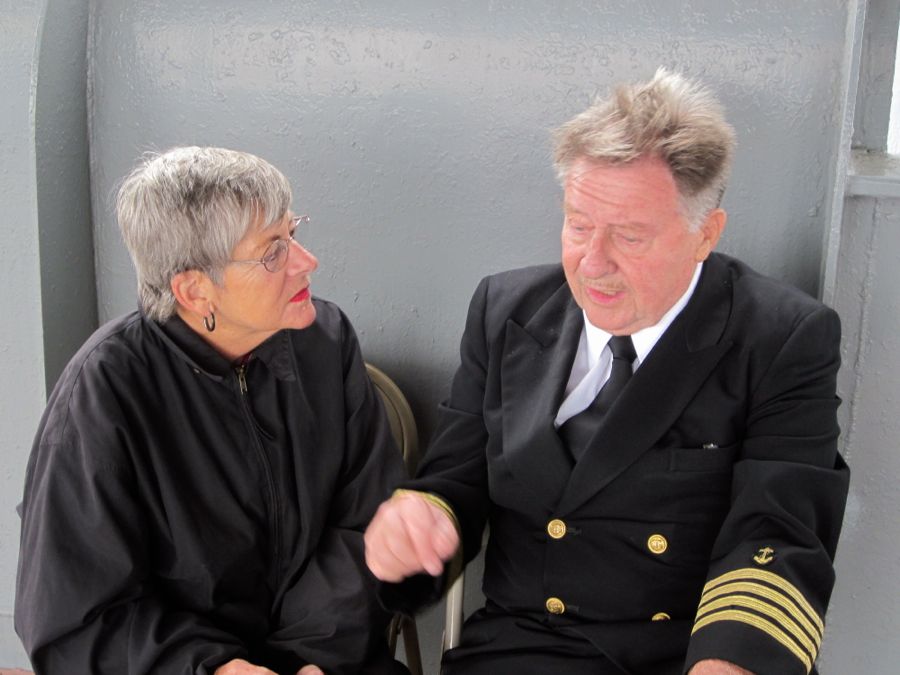
Above The Bridge Was Signal Bridge

The Signal Bridge is the highest point on the ship
Did You Know? - The signal bridge is located atop the wheel house, the highest manned point on the ship, providing the best view of the horizon. The signal bridge is name so, since that is where the signalman would perform their duties communicating with other ships using visual signaling. Visual signaling between ships is especially important during times of war when observing strict radio silence is used to make it difficult for the enemy to locate the position of the ship or convoy. Even in times of peace, visual signaling is still used extensively. There are three primary ways of sending visual signals: flag-hoist, semaphore flags, and flashing light.
Flag-hoist is a daylight system of communication where a series of flags representing letters, numerals or pre-defined actions are displayed. This system is very efficient for sending messages or commands to a group of ships simultaneously and having all ships act on the command in unison (especially useful during fleet or convoy operations). Flag hoists are generally visible at greater distances than semaphore flags and can be displayed for a long duration if necessary.
Semaphore is another daylight system of communication where two handheld flags waved in certain positions represent letters and numerals. Messages are sent by signaling one character at a time. Semaphore flags messages can be sent much more quickly than flag-hoists (or even by flashing light). Semaphore messages can only be seen at shorter distances and are "fleeting" in nature. Flashing light is a visual communication method that can be used day or night. A directional light, with shutters or momentary on switch, is used to flash messages from ship to ship using morse code.
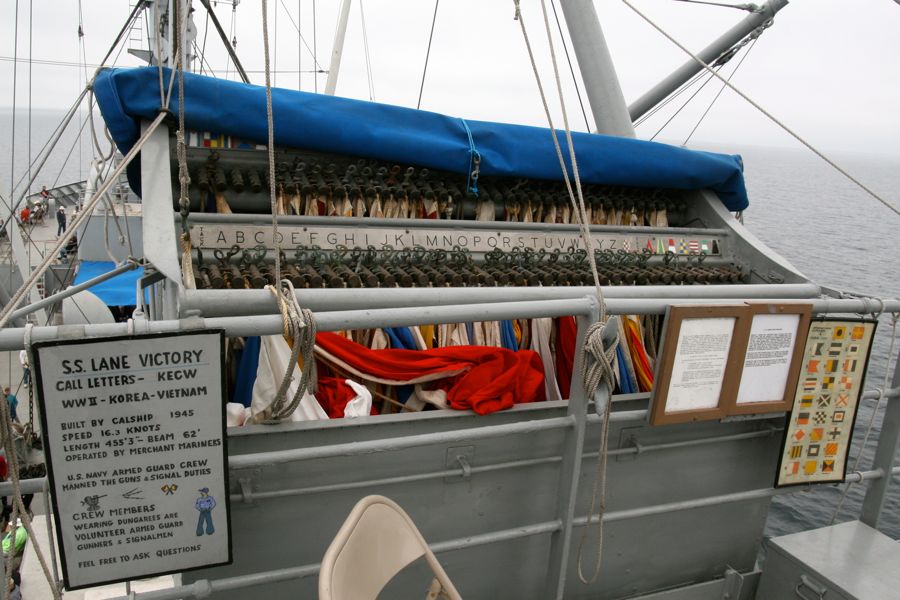
The flags were ready to be put up in a moments notice
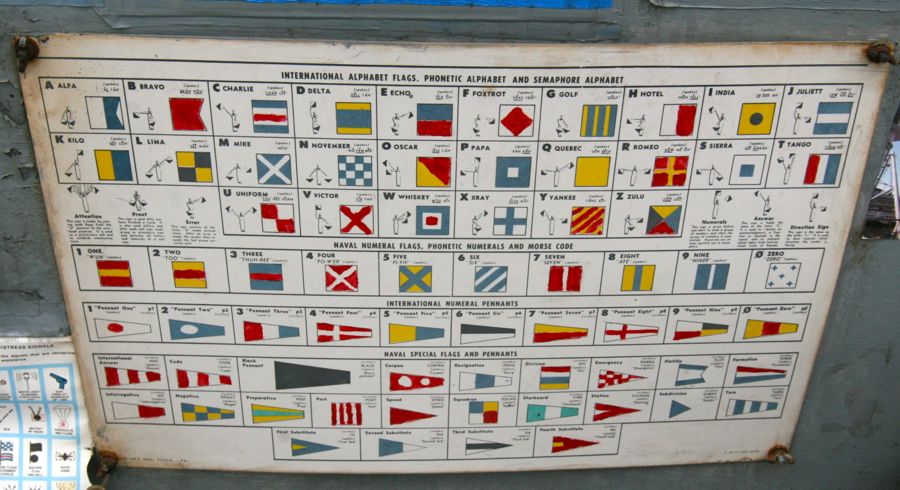
Instructions included
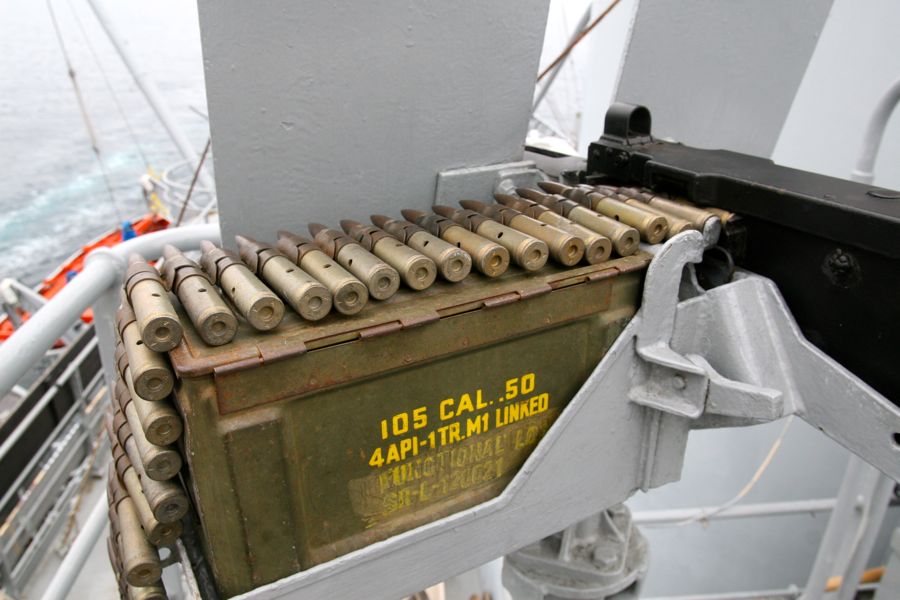
The 50 caliber machine guns were ready to go - The signal bridge was also an optimum spot to install some of the
Oerlikon 20mm anti-aircraft cannons
due to the unobstructed view of the port and starboard horizons.
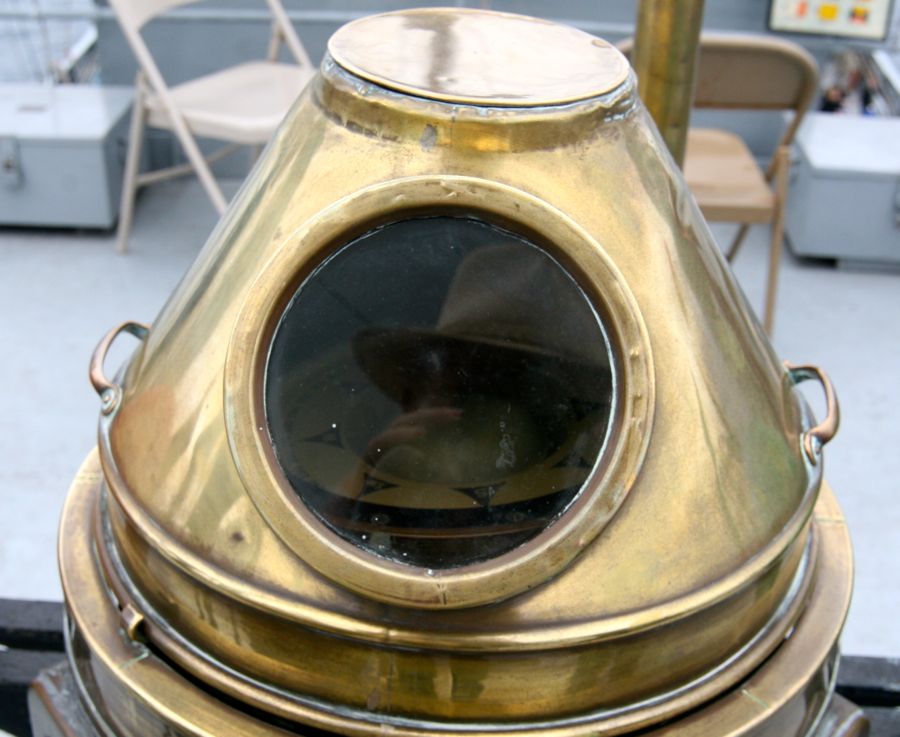
What is this you say???? It's a binnacle!
Did You Know? - A binnacle is a waist-high case or stand on the deck of a ship, generally mounted in front of the helmsman, in which navigational instruments are placed for easy and quick reference as well as to protect the delicate instruments. Its traditional purpose was to hold the ship's magnetic compass, mounted in gimbals to keep it level while the ship pitched from waves. A binnacle may be subdivided into sections and its contents typically include one or more compasses and an oil lamp or other light source. Other devices such as a sand timer for estimating speed may have been stored in the binnacle as well.
The construction of many early binnacles used nails (mid 18th century), which were later discovered to cause magnetic deviations in compass readings. As the development of the compass and understanding of magnetism progressed greater attention was given to binnacle construction to avoid compass disturbances caused by iron.
With the introduction of iron-clad ships the magnetic deviation observed in compasses became more severe. Methods of compensation by arranging iron or magnetic objects near the binnacle were developed. In 1854 a new type of binnacle was patented by John Gray of Liverpool which directly incorporated adjustable correcting magnets on screws or rack and pinions. This was improved again when Lord Kelvin patented in the 1880s another system of compass and which incorporated two compensating magnets. These are colloquially known as 'Kelvin's Balls' in the UK, and 'Navigator's Balls' in the US.
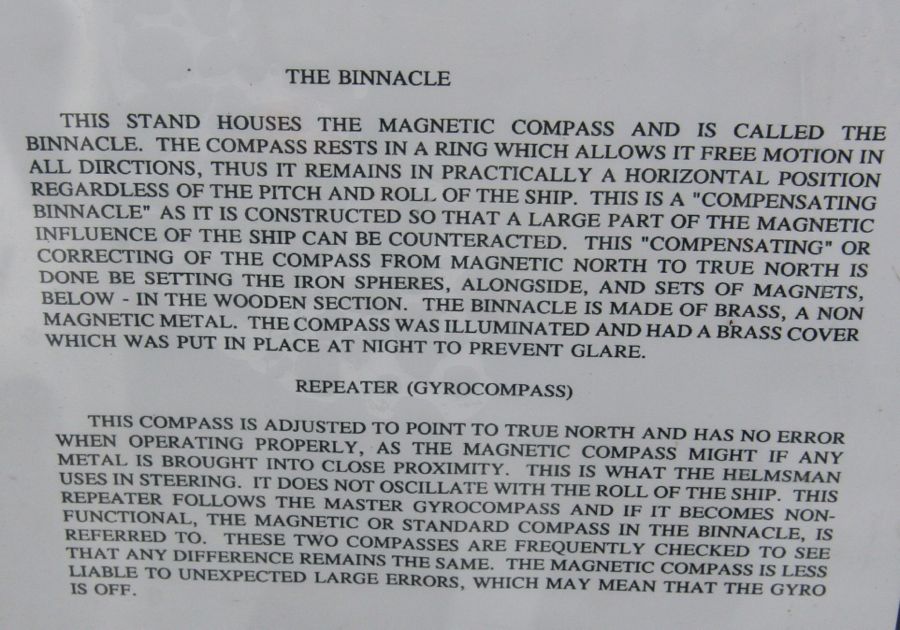
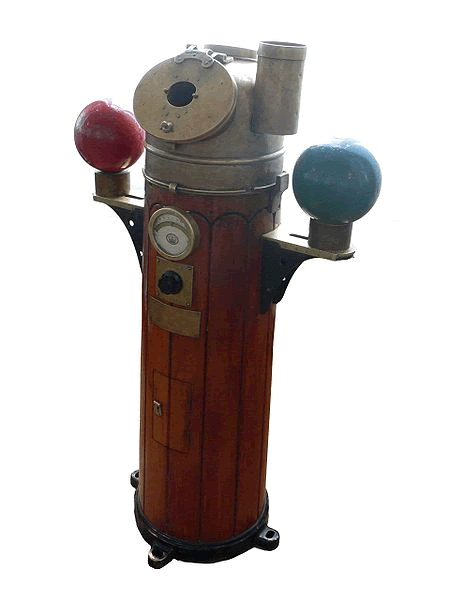
Binnacle with iron correcting spheres at each side and clinometer below compass
A binnacle
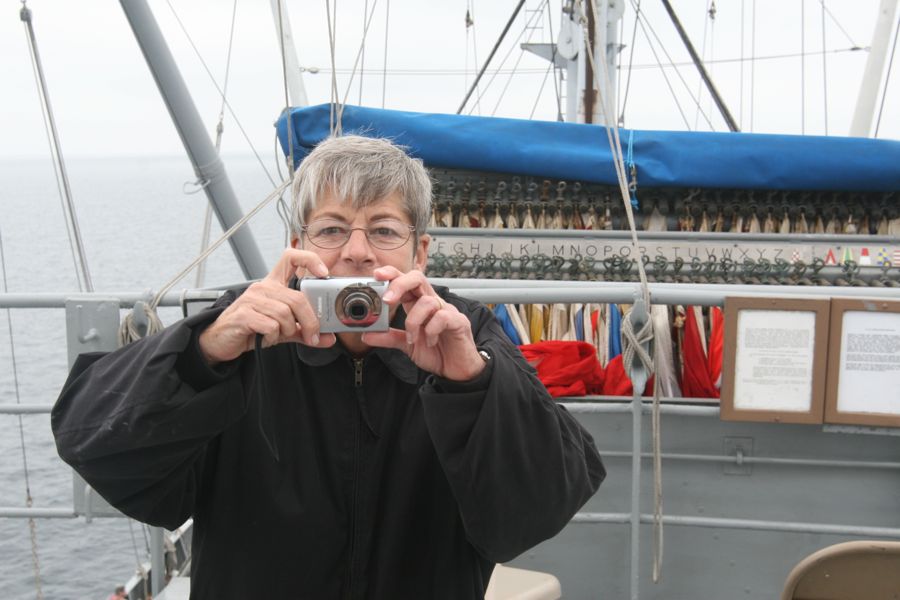
Armed with a flash
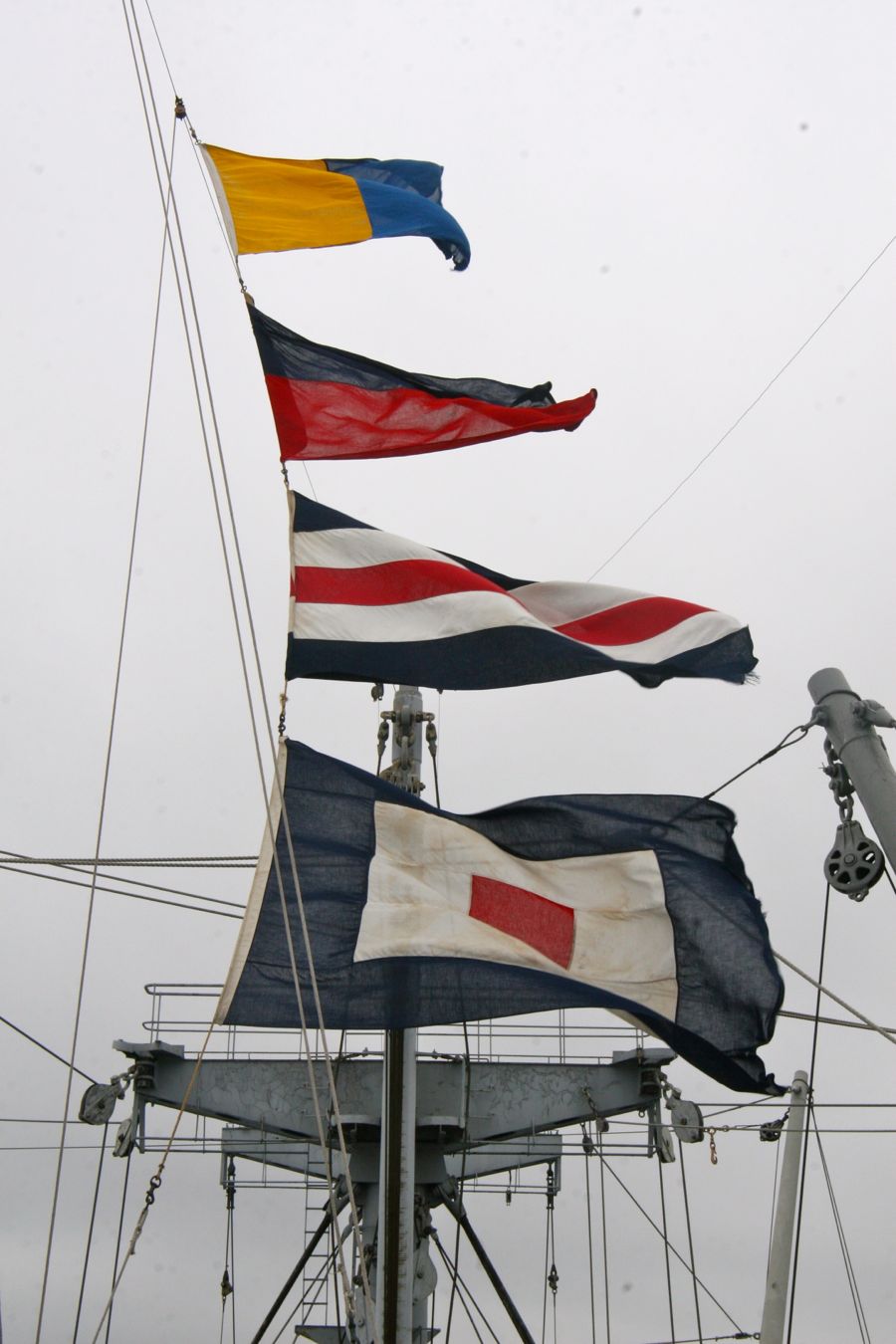
What does it spell?????
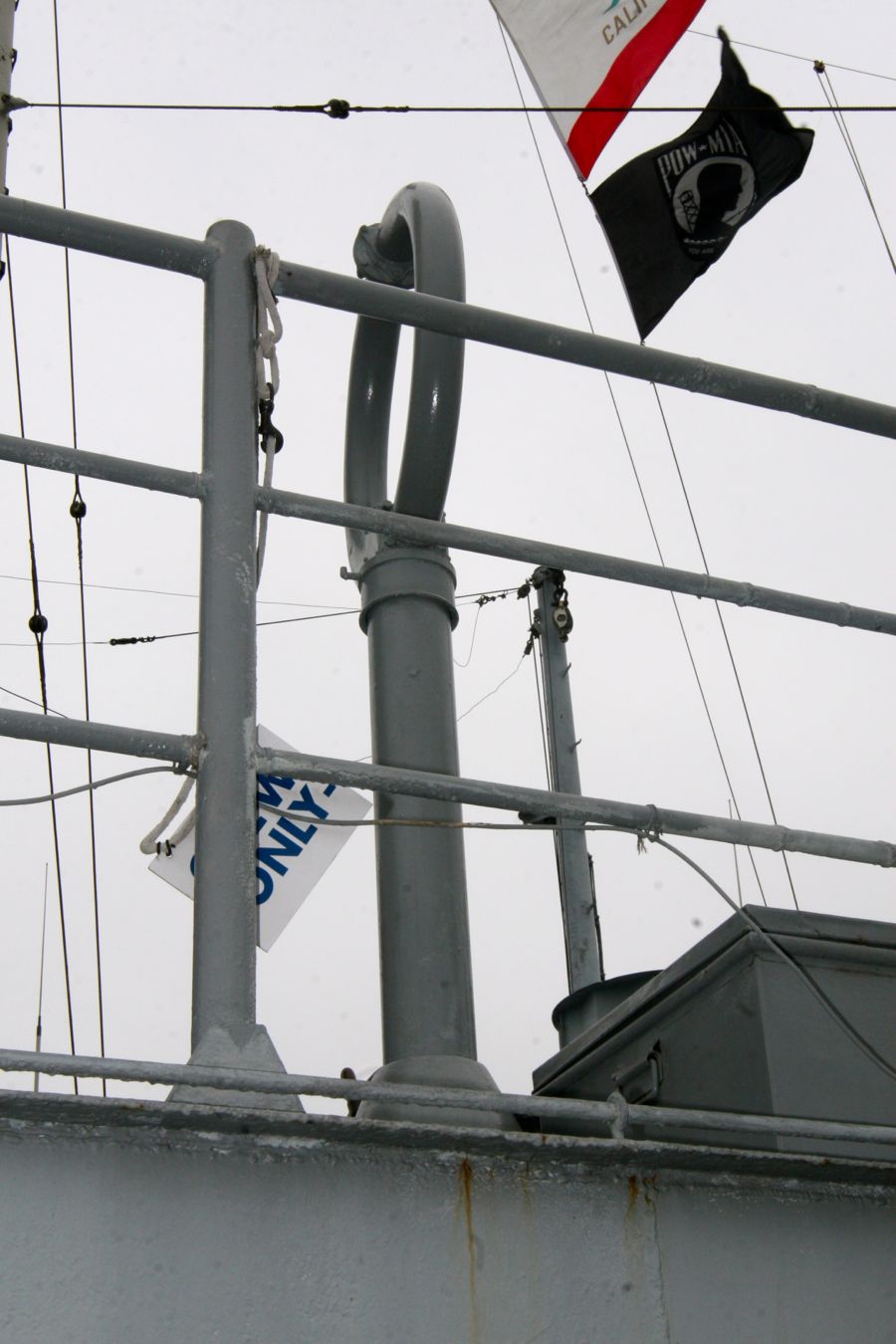
On the roof above the Bridge - A radio direction finder (RDF) is a device for finding the direction to a low frequency radio source. Due to low frequency propagation characteristic to travel very long distances and "over the horizon", it makes a particularly good navigation system for ships, small boats, and aircraft that might be some distance from their destination.
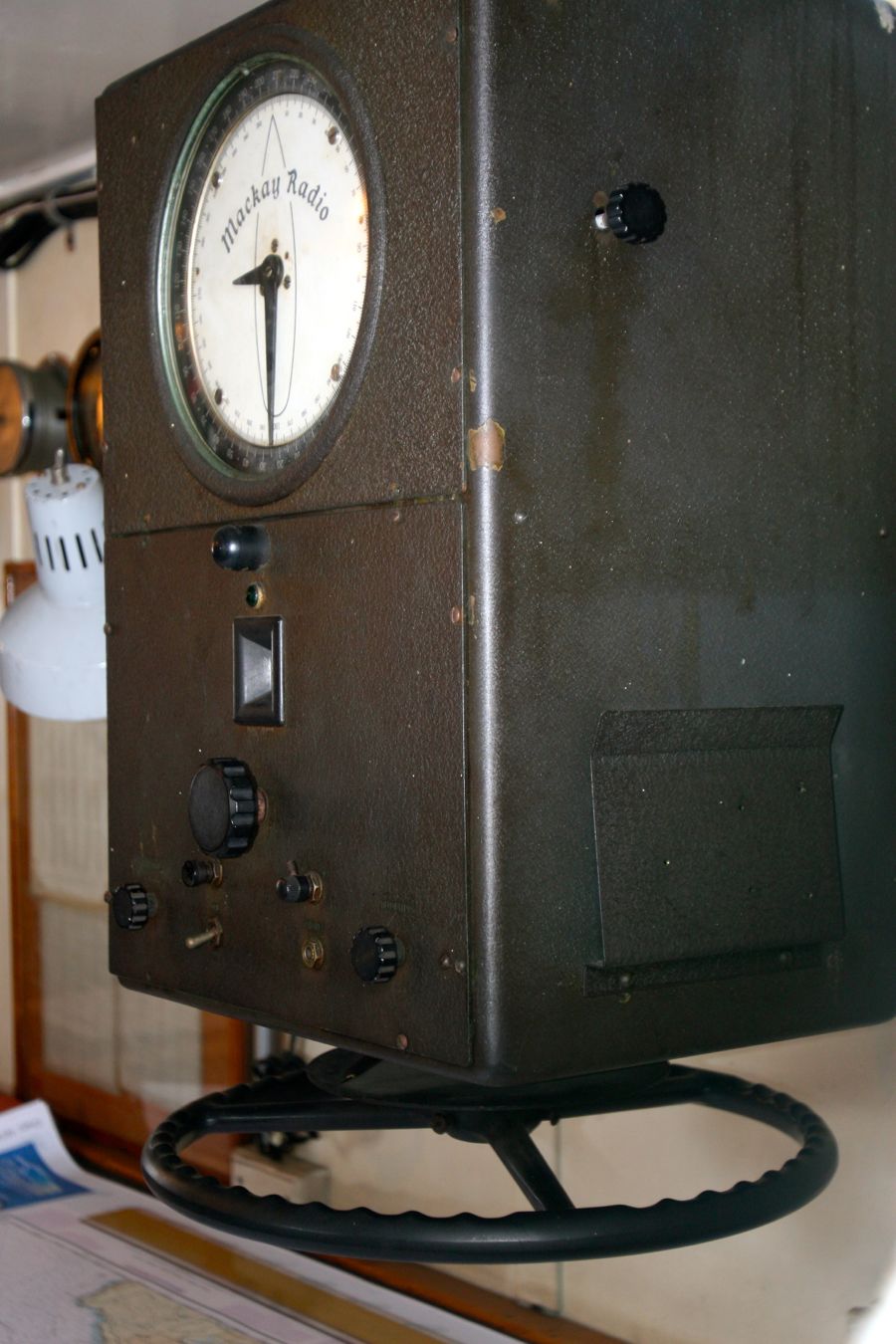
In the Navigates Office
Did You Know? - Radio Direction Finding works by comparing the signal strength of a directional antenna pointing in different directions. At first, this system was used by land and marine-based radio operators, using a simple rotatable loop antenna linked to a degree indicator. This system was later adopted for both ships and aircraft, and was widely used in the 1930s and 1940s. On pre-World War II aircraft, RDF antennas are easy to identify as the circular loops mounted above or below the fuselage. Later loop antenna designs were enclosed in an aerodynamic, teardrop-shaped fairing. In ships and small boats, RDF receivers first employed large metal loop antennae, similar to aircraft, but usually mounted atop a portable battery-powered receiver.
In use, the RDF operator would first tune the receiver to the correct frequency, then manually turn the loop, either listening or watching an S meter to determine the direction of the null (the direction at which a given signal is weakest) of a long wave (LW) or medium wave (AM) broadcast beacon or station (listening for the null is easier than listening for a peak signal, and normally produces a more accurate result). This null was symmetrical, and thus identified both the correct degree heading marked on the radio's compass rose as well as its 180-degree opposite. While this information provided a baseline from the station to the ship or aircraft, the navigator still needed to know beforehand if he was to the east or west of the station in order to avoid plotting a course 180-degrees in the wrong direction. By taking bearings to two or more broadcast stations and plotting the intersecting bearings, the navigator could locate the relative position of his ship or aircraft.
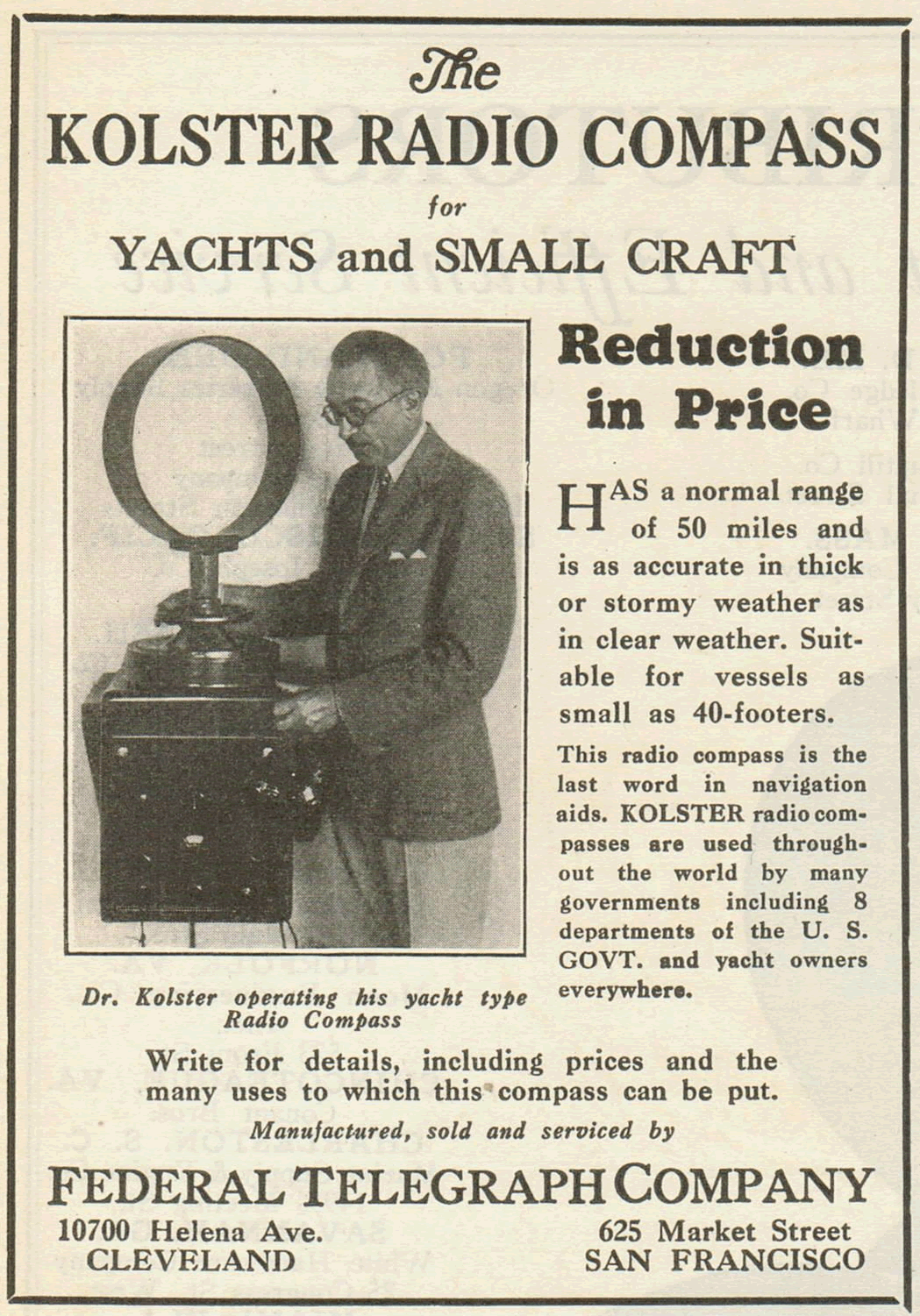
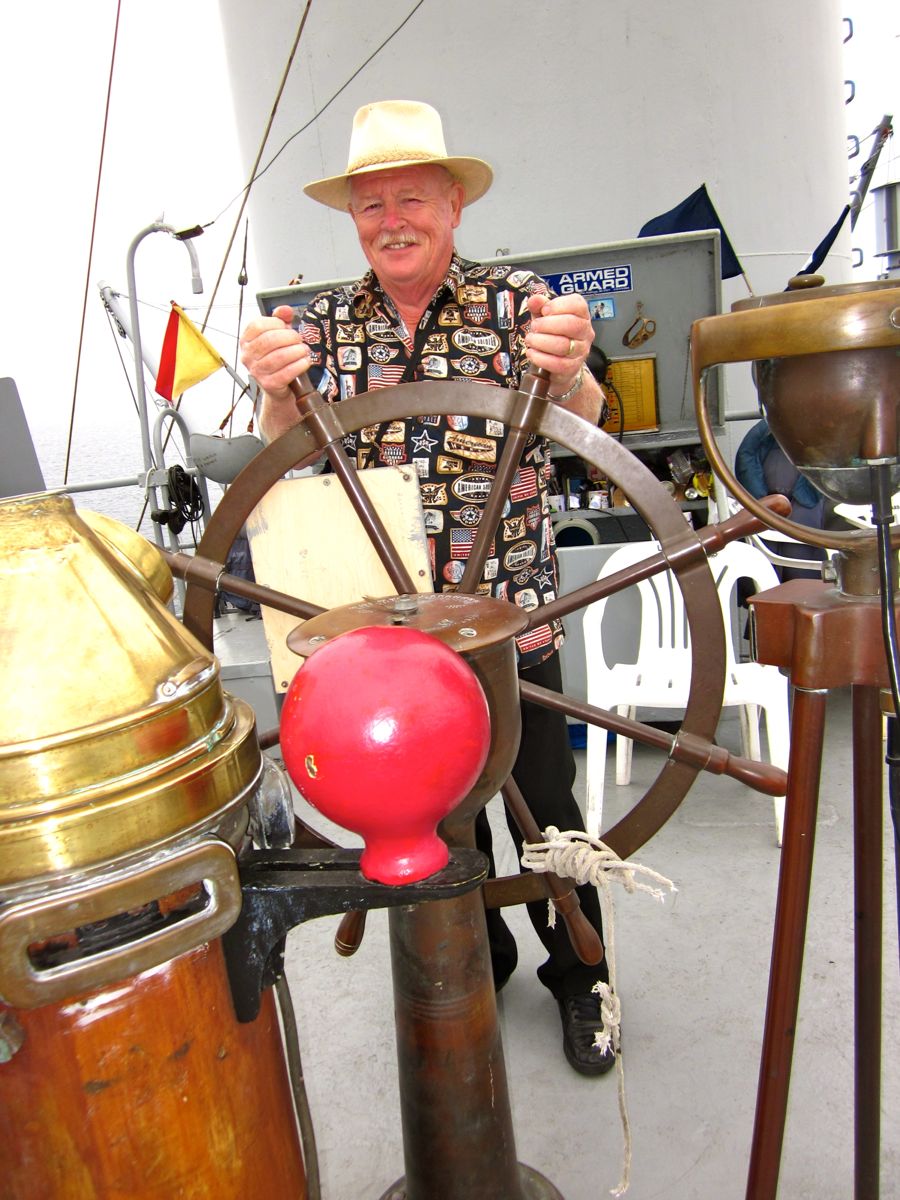
Lookout ahead
The Front Of The Ship Was Armed To The Teeth

You do not mess with these guys unless you are serious
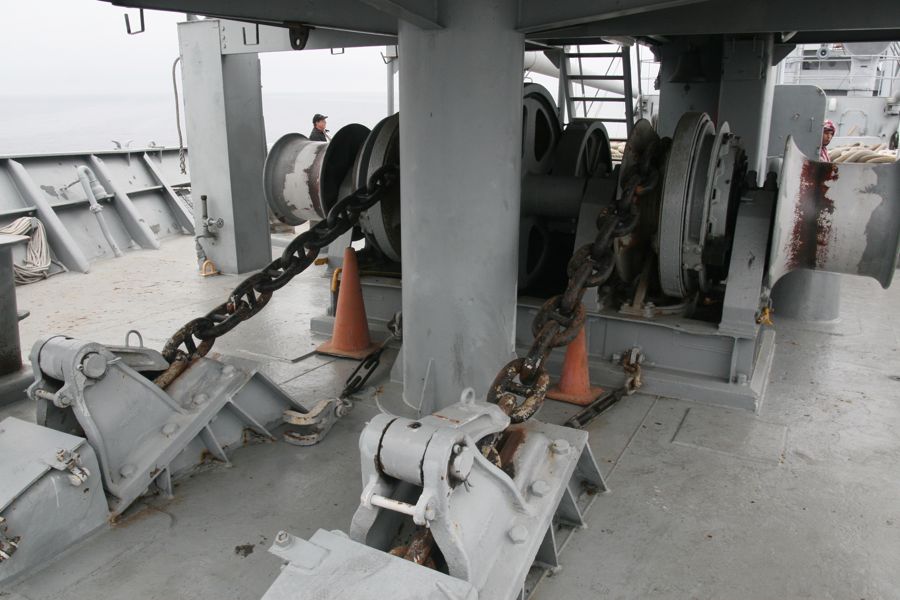
The anchor chains
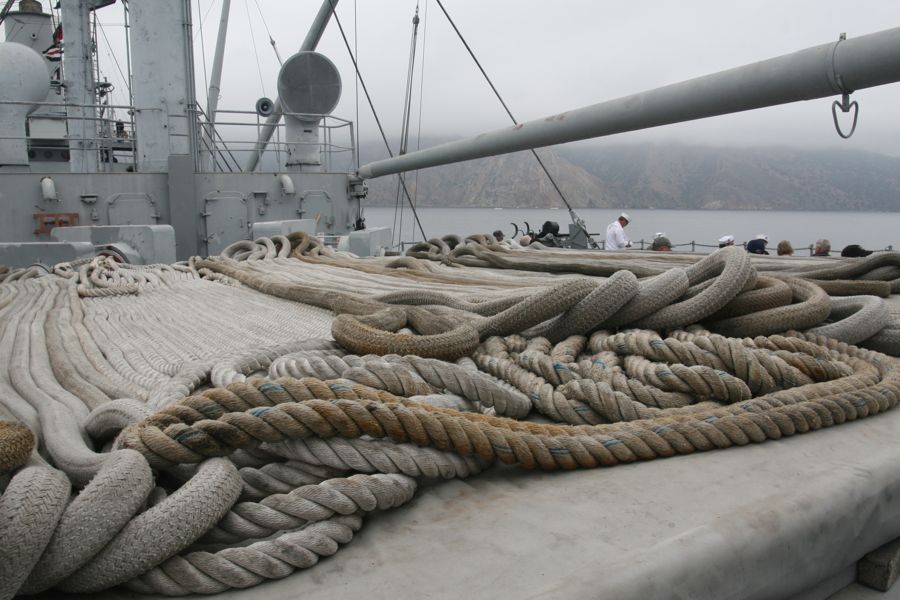
Loads of lines on top of hold #1
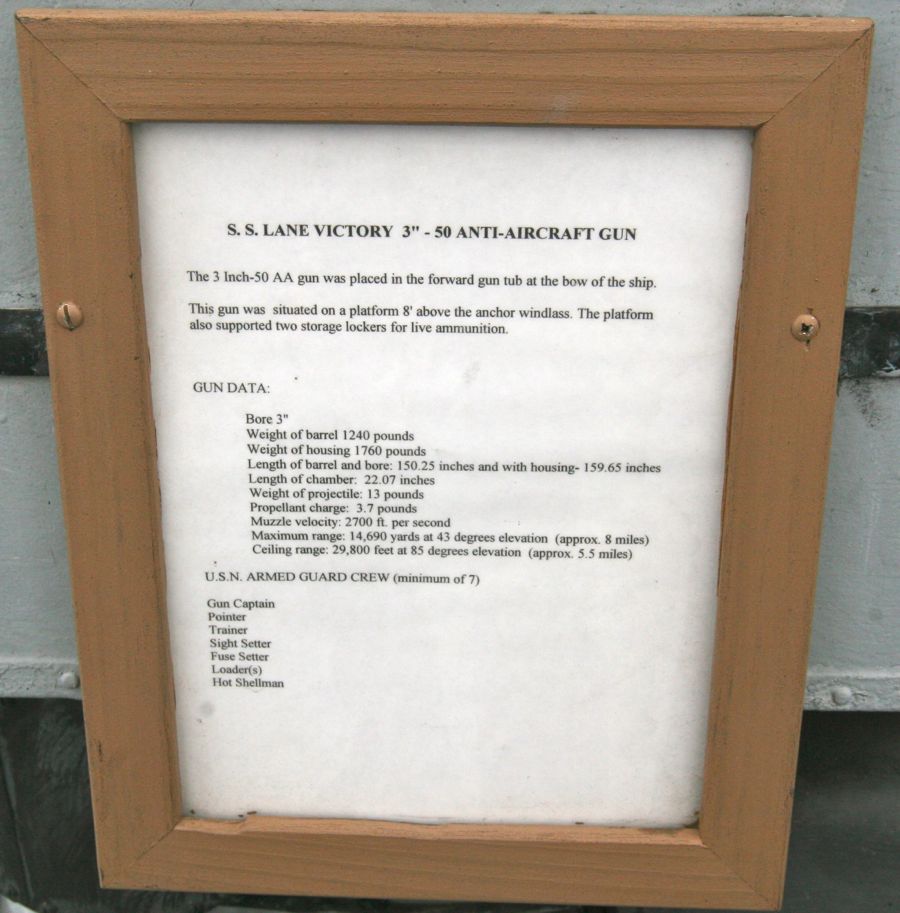
The AA guns were right up front
Did You Know? - Armament was typically one 5 inch 38 caliber gun on the stern; one 3 inch 50 caliber gun in the point of the bow; a 20 mm Oerlikon machine gun on each of the four corners of the flying bridge (the open top deck of the midship house); and two 20 mm Oerlikon guns, one on the end of each wing of the after steering station atop the poop house. All of the guns were mounted in circular gun tubs about waist high protected with plastic armor. This gave a total armament of one 5 inch, one 3 inch and six 20 mm weapons.
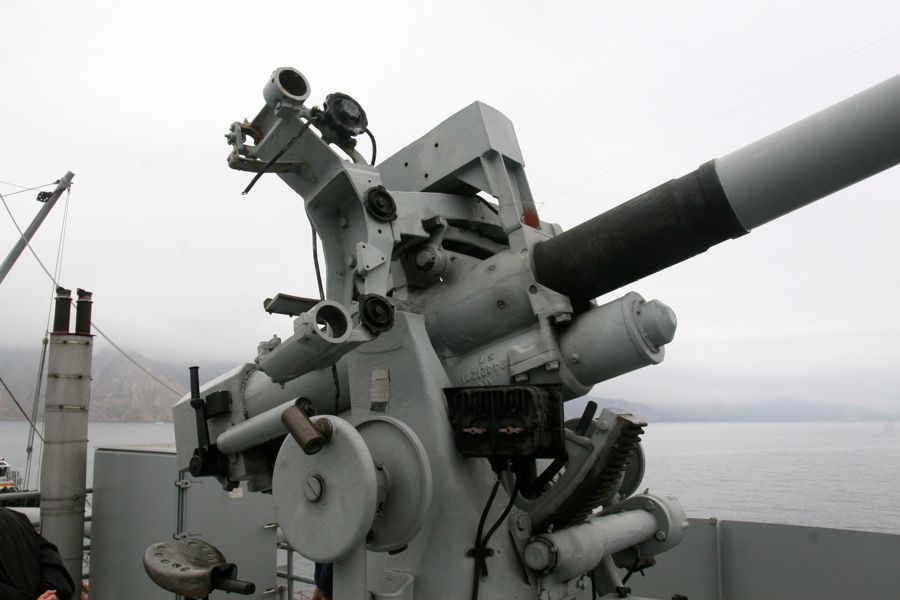
Do NOT mess with the three incher
Did You Know? - The 3"/50 caliber1 gun is located in a gun-tub mounted above the foc'sle deck on the bow. The 3" ammunition storage and handling room was located below the foc'sle deck forward of cargo hold #1. Those spaces now have been converted to house the ship's auxiliary generators. Used extensively on smaller warships, destroyers and merchant ships, these guns were also intended to serve a dual purpose2 role. However, their effectiveness in either role was limited. This was primarily due to the fact that the light weight shells they fired were of limited use against most surface targets, and their manual pointing/aiming operation limited their success against aerial targets. Later in the war, when paired with VT (proximity) fused shells and an automated director system, these guns were considered equal to or better than the 40 mm Bofors mounts in the anti-aircraft role
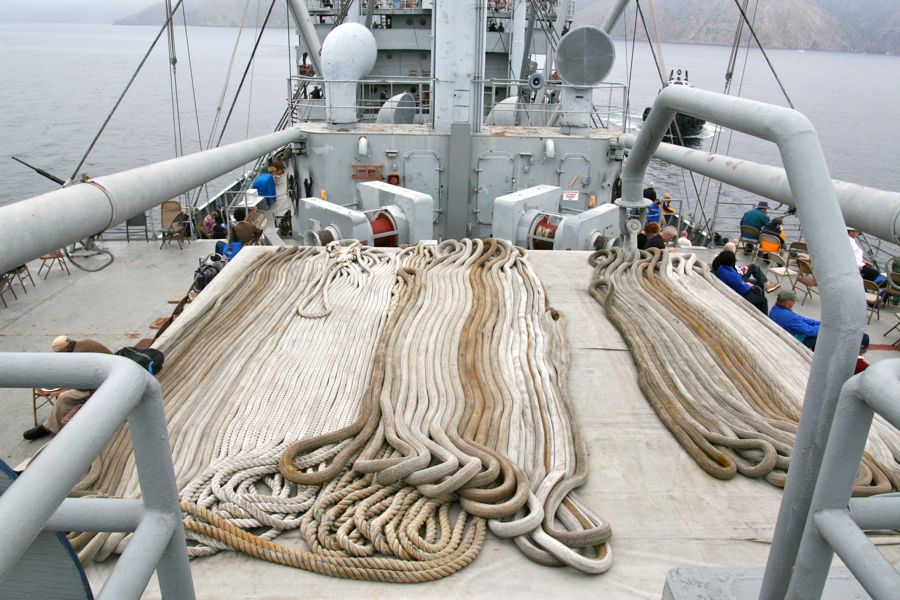
The lines were ready for use
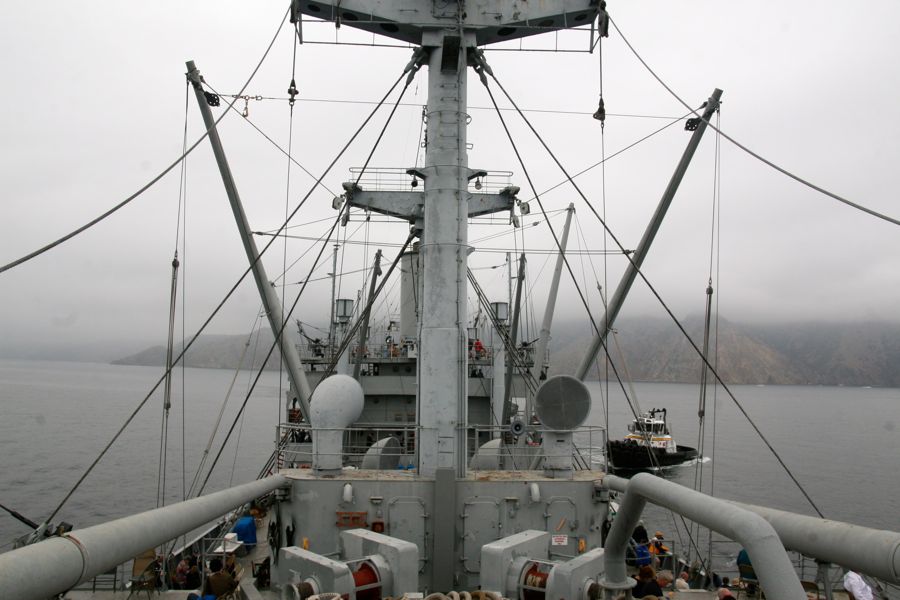
We arrived at Catalina and turned northward to begin the voyage back home

Back towards the superstructure was the Jeep
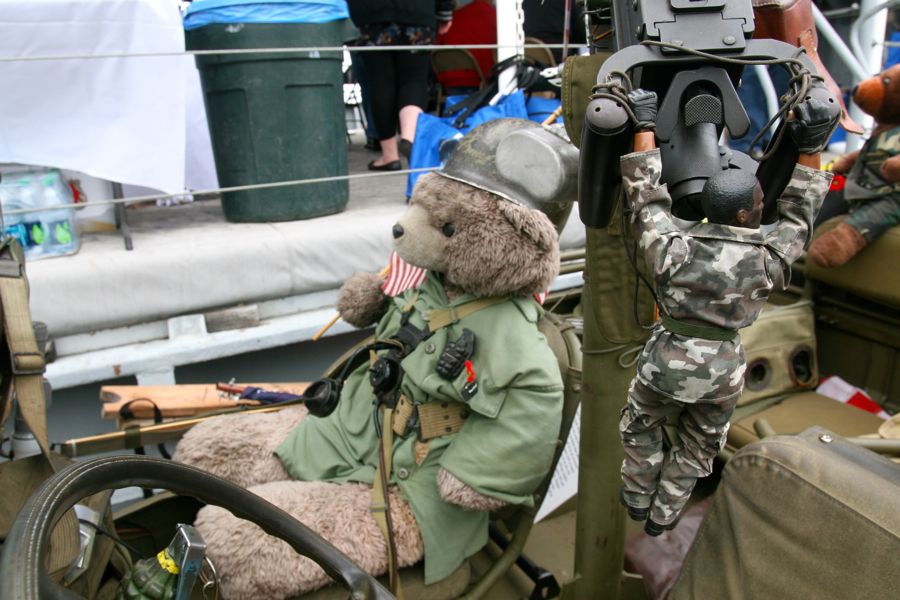
The bear did a great job of driving
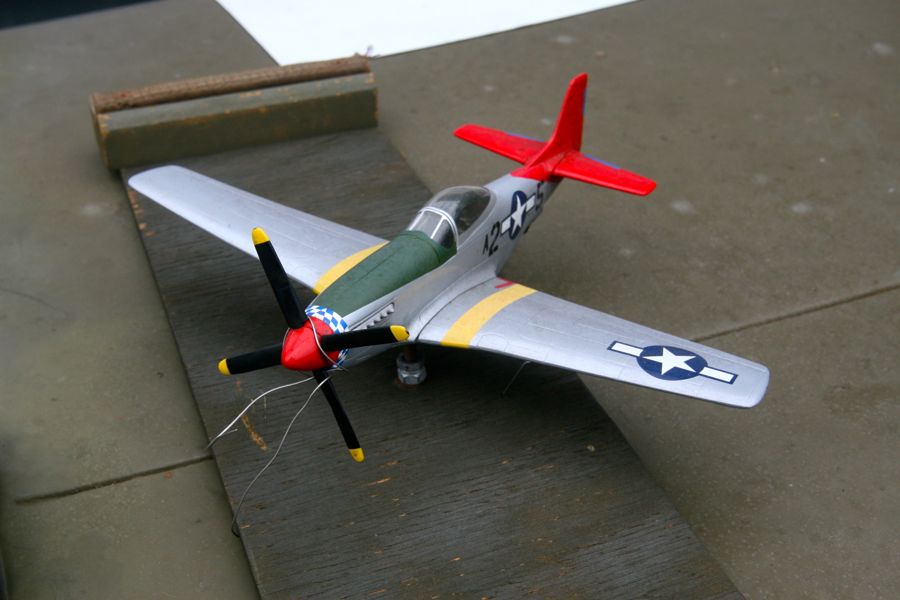
P-51's ready to go
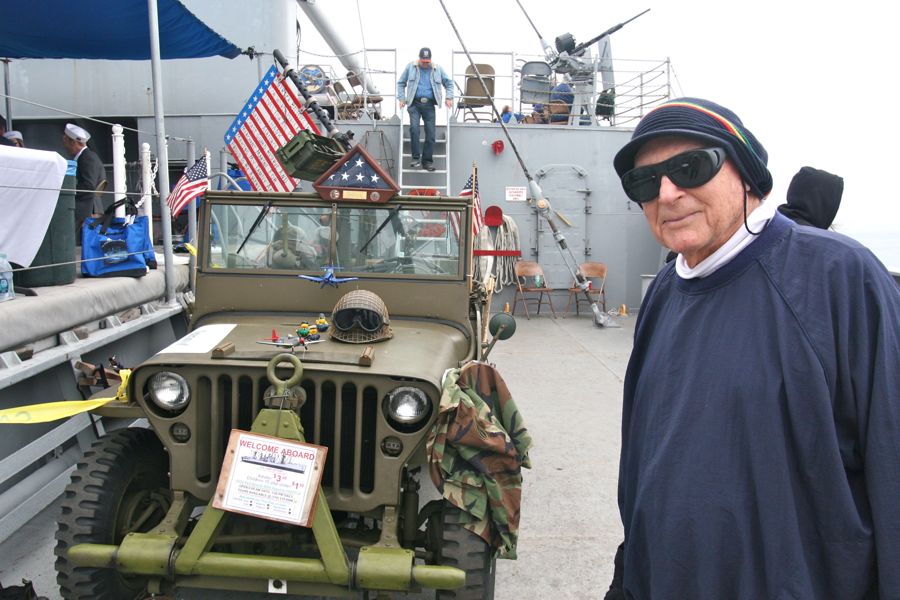
Herbie liked the Jeep
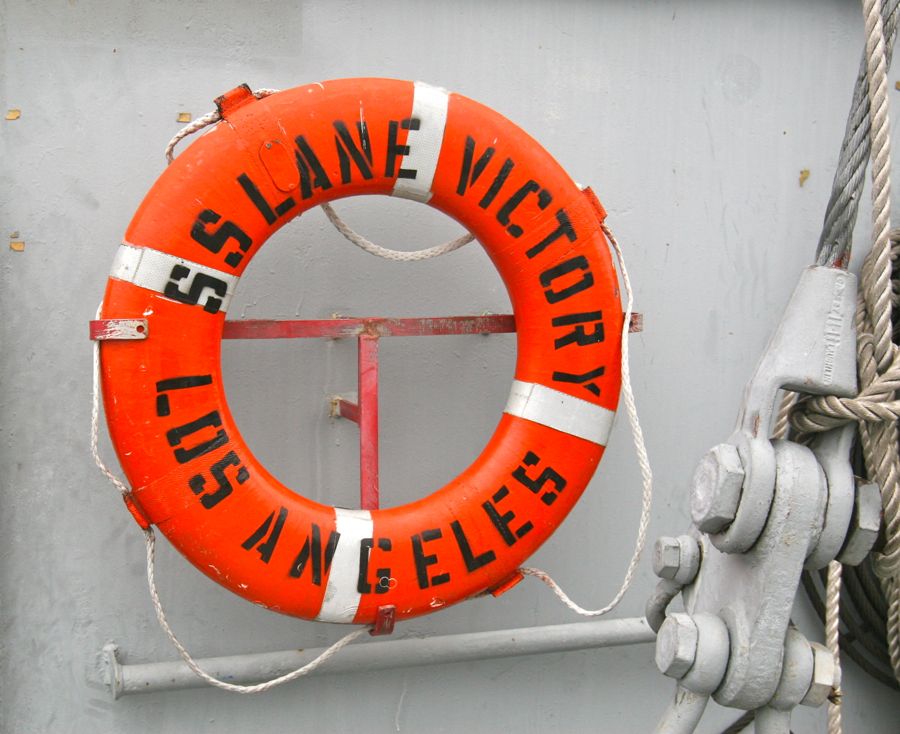
Just in case
Did You Know? - A lifebuoy, ring buoy, lifering, lifesaver, life preserver or lifebelt, also known as a "kisby ring" or "perry buoy", is a life saving buoy designed to be thrown to a person in the water, to provide buoyancy, to prevent drowning. Some modern lifebuoys are fitted with a seawater-activated light, or lights, to aid rescue at night.
The lifebuoy usually is ring-shaped or horseshoe-shaped and has a connecting line allowing the casualty to be pulled to the rescuer. They are carried by ships and are also located beside bodies of water that have the depth or potential to drown someone. They are often subjected to vandalism, which can lead to heavy fines of up to £5000 and/or imprisonment in the United Kingdom of Great Britain and Northern Ireland, as a lack of this essential device has been, in the past, the cause of deaths.
The "kisby ring", or sometimes "Kisbie ring", is thought to be named after Thomas Kisbee (b: 1792, d: 1877) who was a British naval officer.
Down Into Hold #2 And A Great Museum

We are here
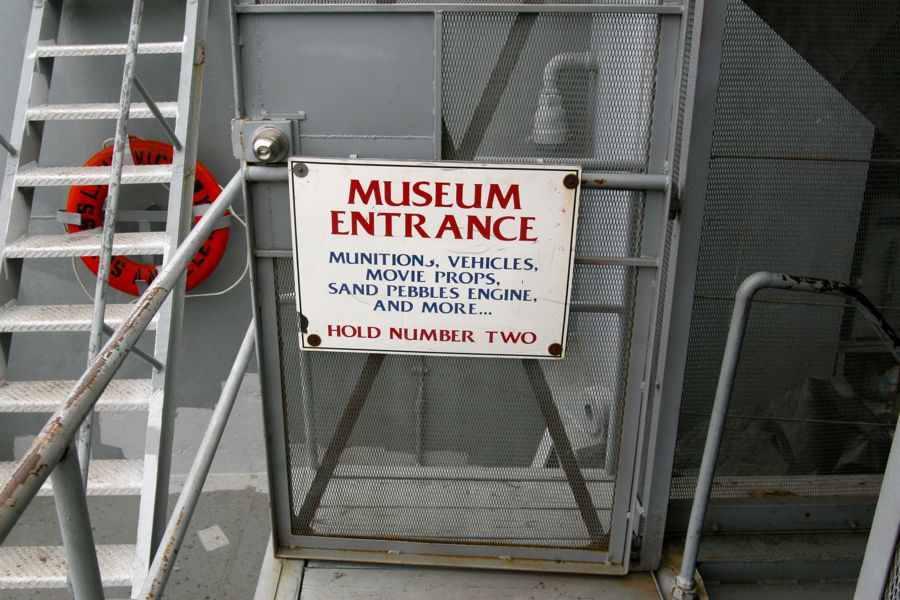
Down Into Hold #2
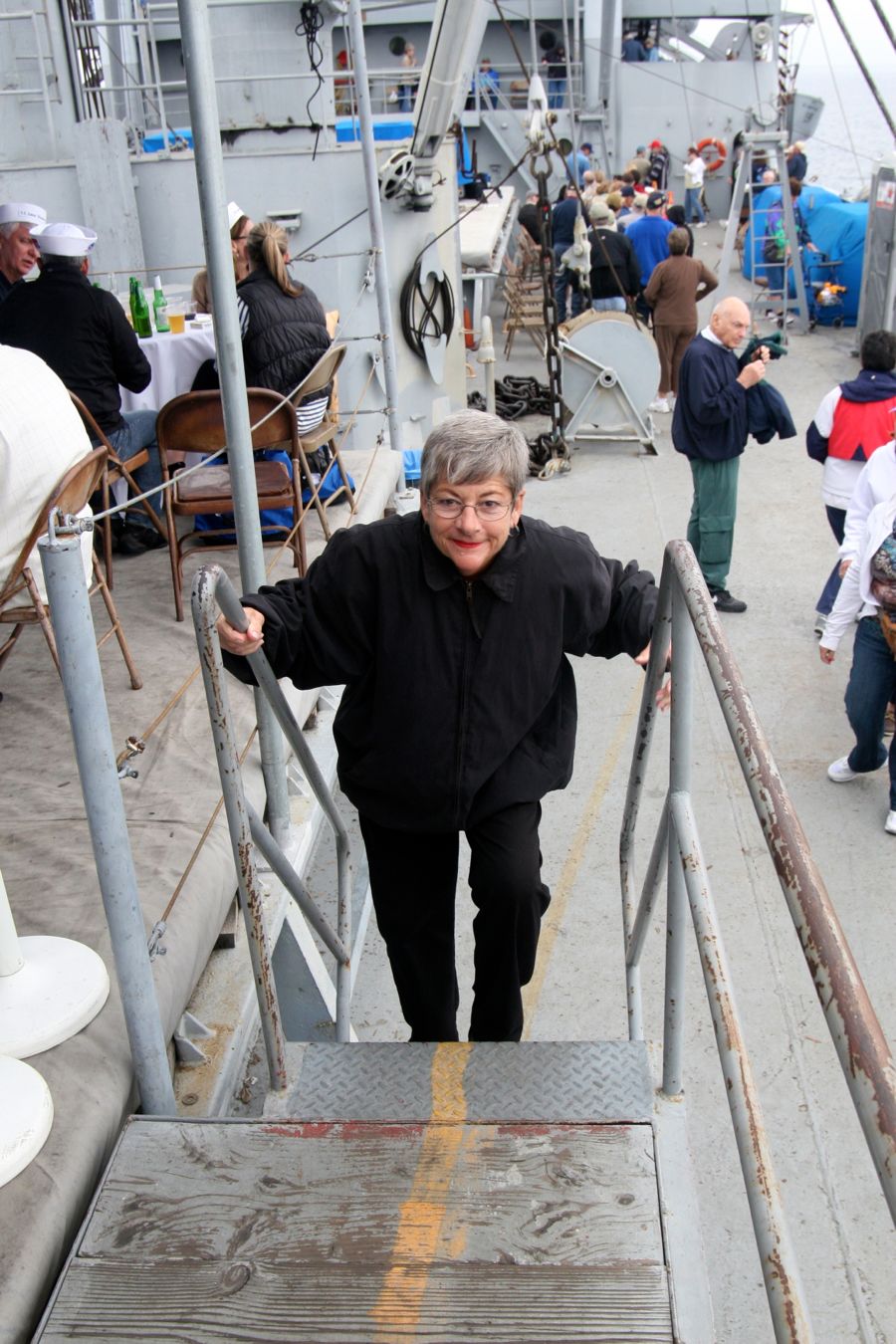
Up and down into the bowels of the ship
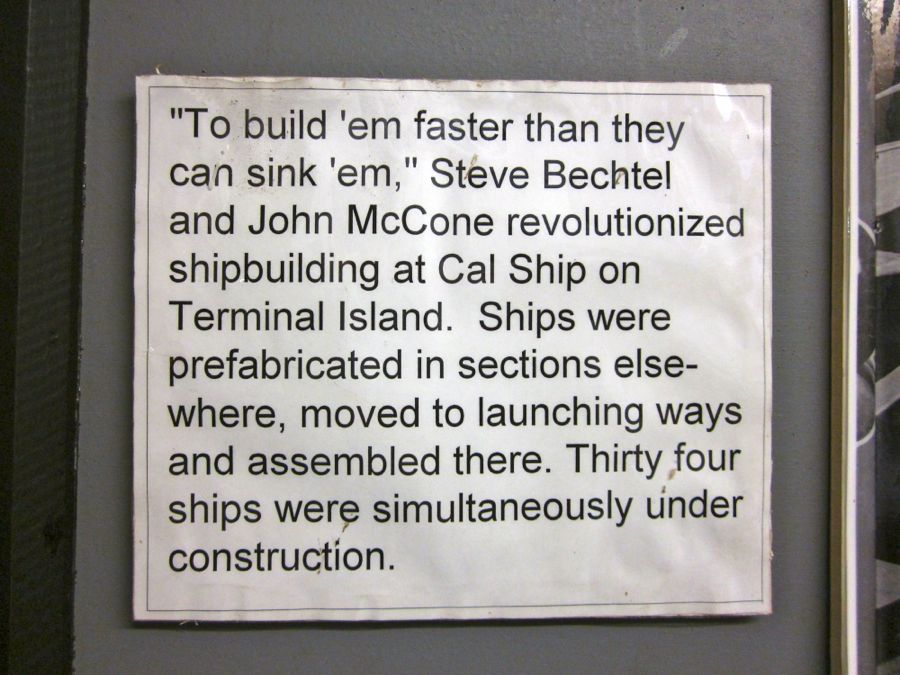
Terminal Island San Pedro during the war
Did You Know? - Stephen D. Bechtel, Jr. (born May 10, 1925) is, with his son Riley, co-owner of the Bechtel Corporation. He is the son of Stephen David Bechtel, Sr. and grandson of Warren A. Bechtel who founded the Bechtel Corporation.
Bechtel won the contract, from which would come two of the most productive shipyards of the war. First came Calship in 1941 at Terminal Island in Los Angeles harbor. By war's end, Calship had produced 467 vessels, among them the cargo vessels called Liberty ships, the speedier Victory ships, and tankers. In the fall of 1944, Calship was turning out 20 ships a month, operating three shifts a day, seven days a week, making it perhaps the most productive shipyard in history. The last ship would slip into the water on October 27, 1945.
Bechtel-McCone-Parsons, through a joint venture with Todd Shipyards, had already won an order from the U.S. Maritime Commission for five C-1 cargo ships. But not long afterward, the British placed an urgent order for 60 more C-1s, to replace the tonnage that German submarines had sunk. Through a chance meeting with a friend, John McCone learned of the Maritime Com-mission's needs and arranged a meeting with Admiral Howard L. Vickery, the U.S. Navy officer responsible for naval ship design, construction, and purchasing.
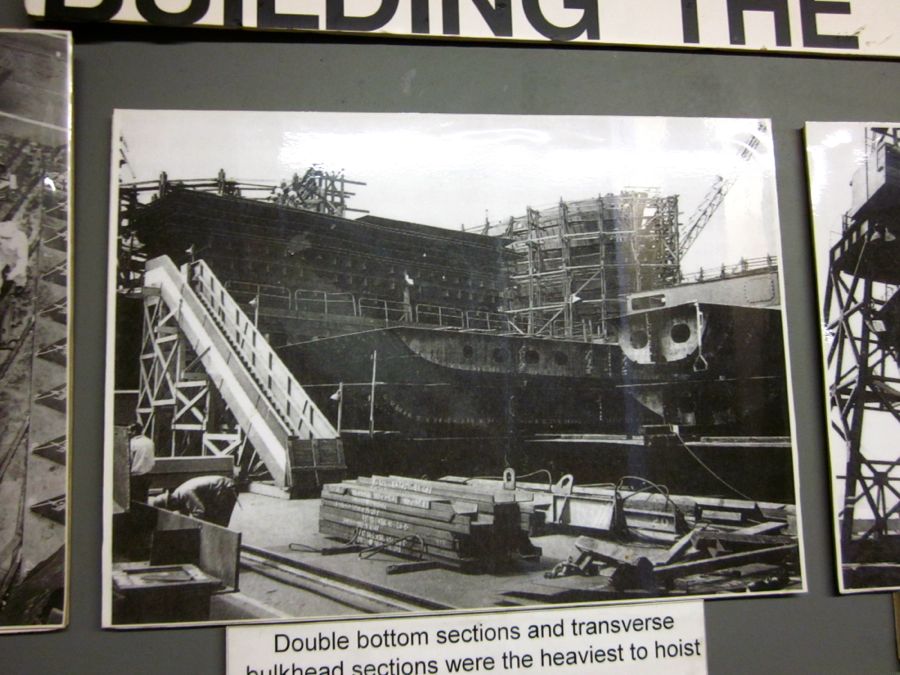
Image how busy the port was in the 1940's
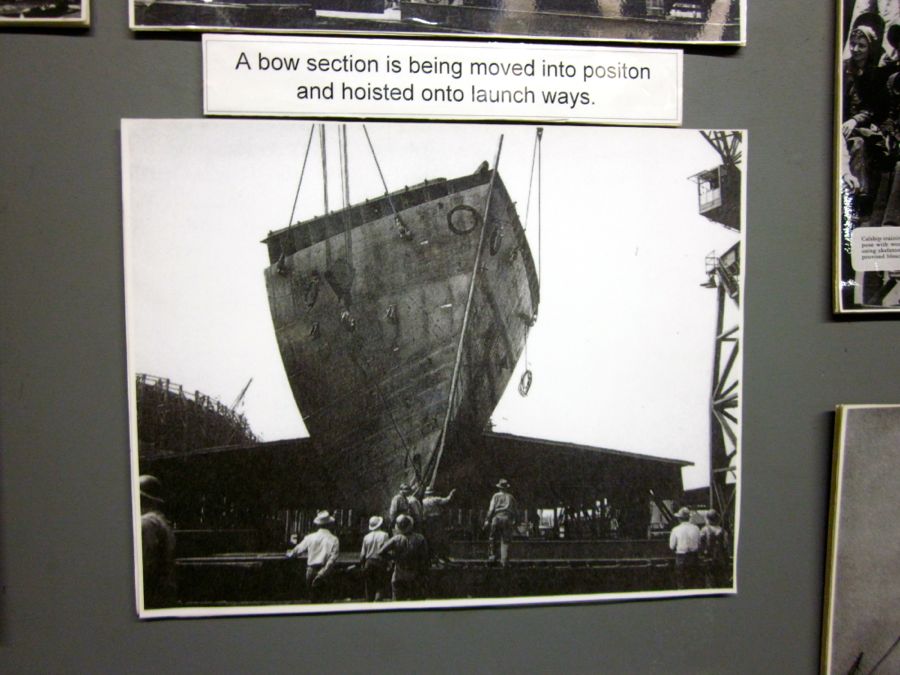
Just 100 tons or so.....
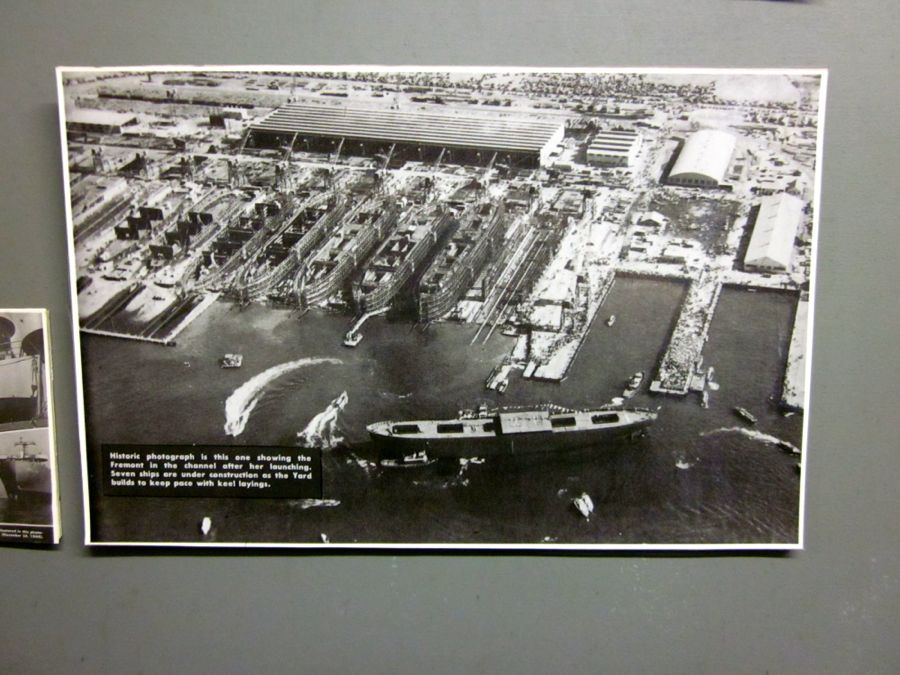
Thirteen in construction phases every day
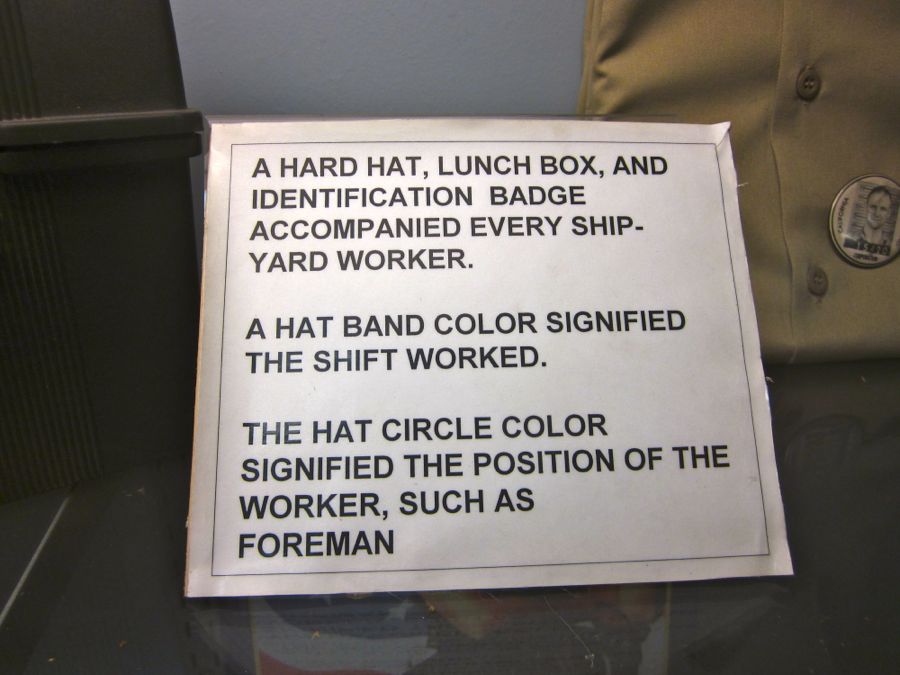
70% of the workers were "unskilled" women
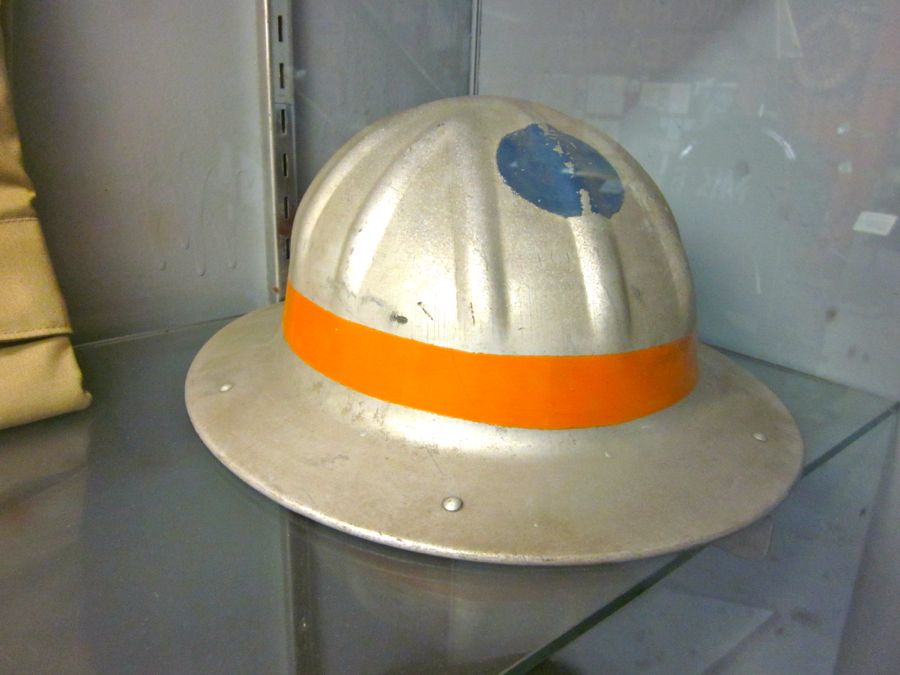
Marked as they were in 1940's
Did You Know? - A hard hat is a type of helmet predominantly used in workplace environments, such as construction sites, to protect the head from injury by falling objects, impact with other objects, debris, bad weather and electric shock. Inside the helmet is a suspension that spreads the helmet's weight over the top of the head. It also provides a space of approximately 30 mm (1.2 inch) between the helmet's shell and the wearer's head so that if an object strikes the shell, the impact is less likely to be transmitted directly to the skull. Sometimes the helmet shell has a midline reinforcement ridge, which strengthens it against impact.
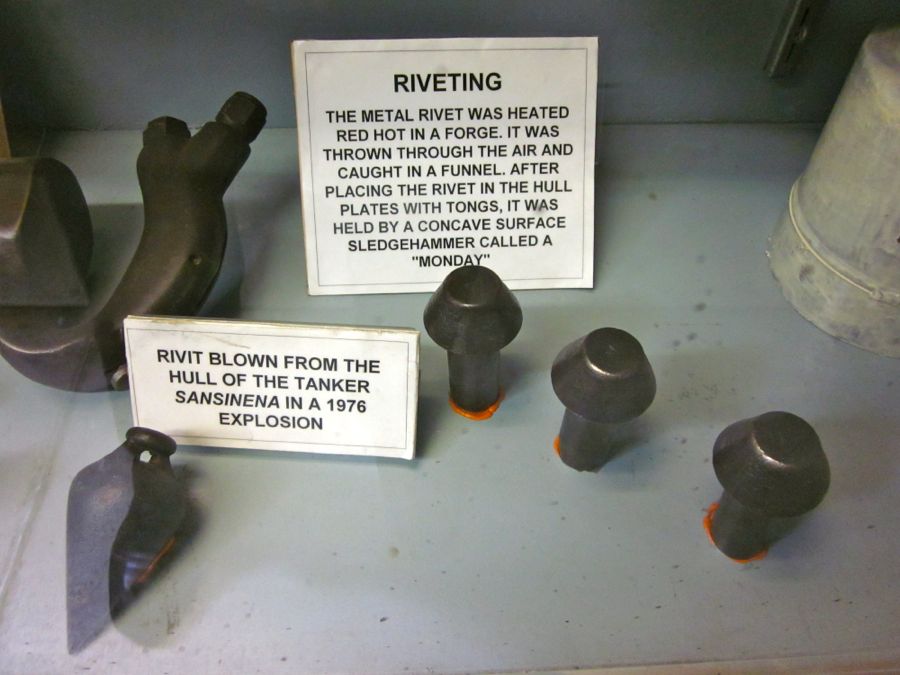
Rivets were done by the millions
Did You Know? - A rivet is a permanent mechanical fastener. Before being installed a rivet consists of a smooth cylindrical shaft with a head on one end. The end opposite the head is called the buck-tail. On installation the rivet is placed in a punched or pre-drilled hole, and the tail is upset, or bucked (i.e. deformed), so that it expands to about 1.5 times the original shaft diameter, holding the rivet in place. To distinguish between the two ends of the rivet, the original head is called the factory head and the deformed end is called the shop head or buck-tail.
Because there is effectively a head on each end of an installed rivet, it can support tension loads (loads parallel to the axis of the shaft); however, it is much more capable of supporting shear loads (loads perpendicular to the axis of the shaft). Bolts and screws are better suited for tension applications.
Fastenings used in traditional wooden boat building, like copper nails and clinch bolts, work on the same principle as the rivet but were in use long before the term rivet came about and, where they are remembered, are usually classified among the nails and bolts respectively.
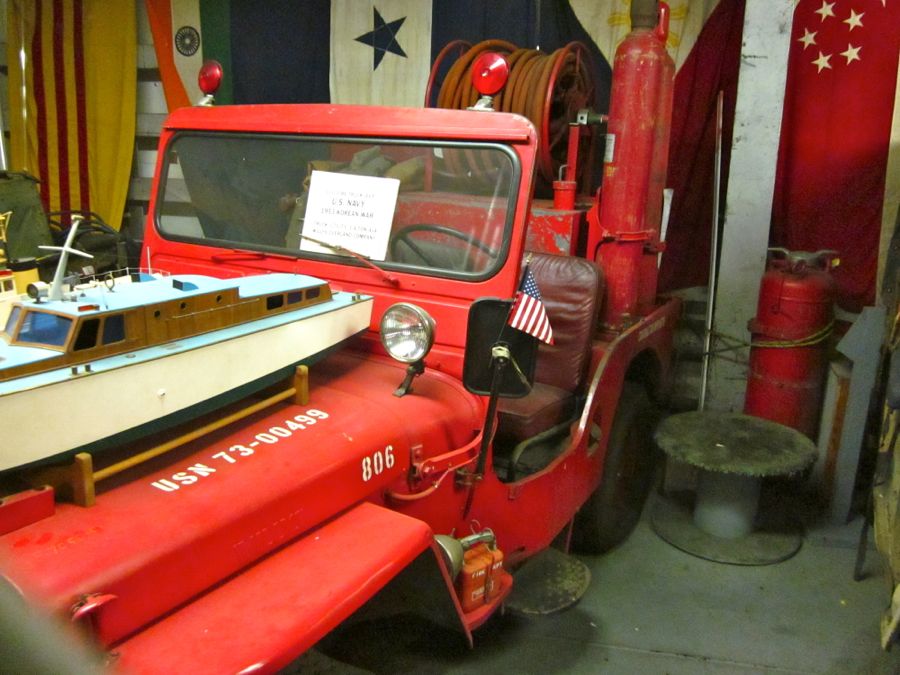
Fire truck Jeep
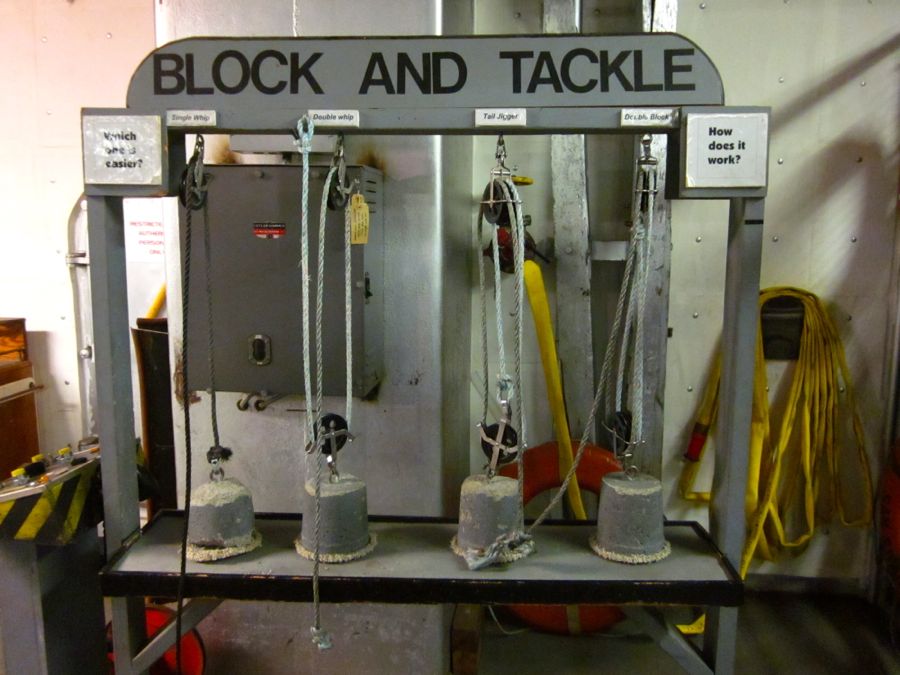
Displays
Did You Know? - A block and tackle is a system of two or more pulleys with a rope or cable threaded between them, usually used to lift or pull heavy loads.
The pulleys are assembled together to form blocks so that one is fixed and one moves with the load. The rope is threaded, or reeved, through the pulleys to provide mechanical advantage that amplifies that force applied to the rope.
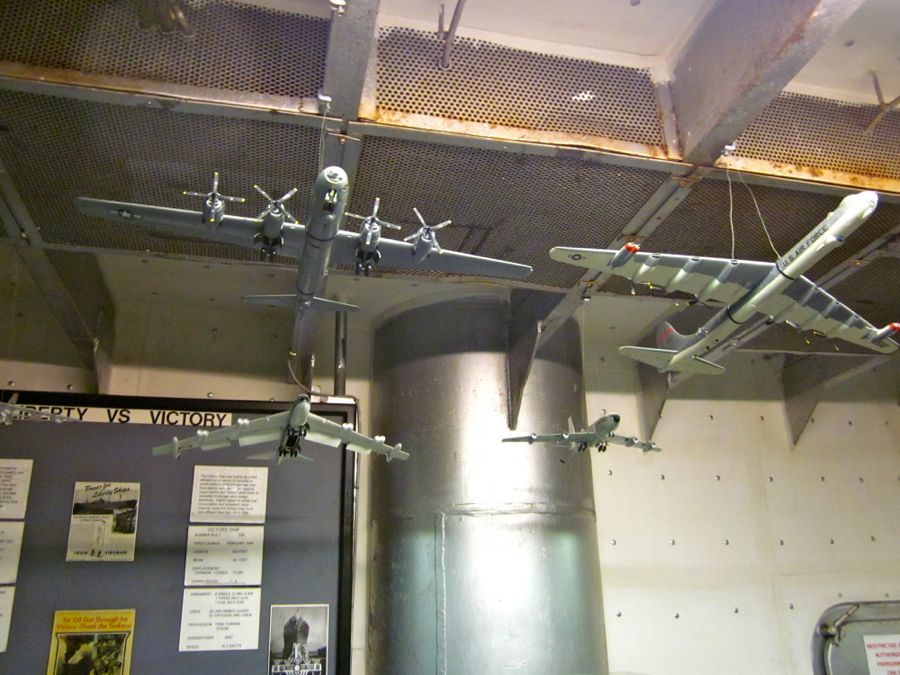
Models of great bombers were displayed overhead
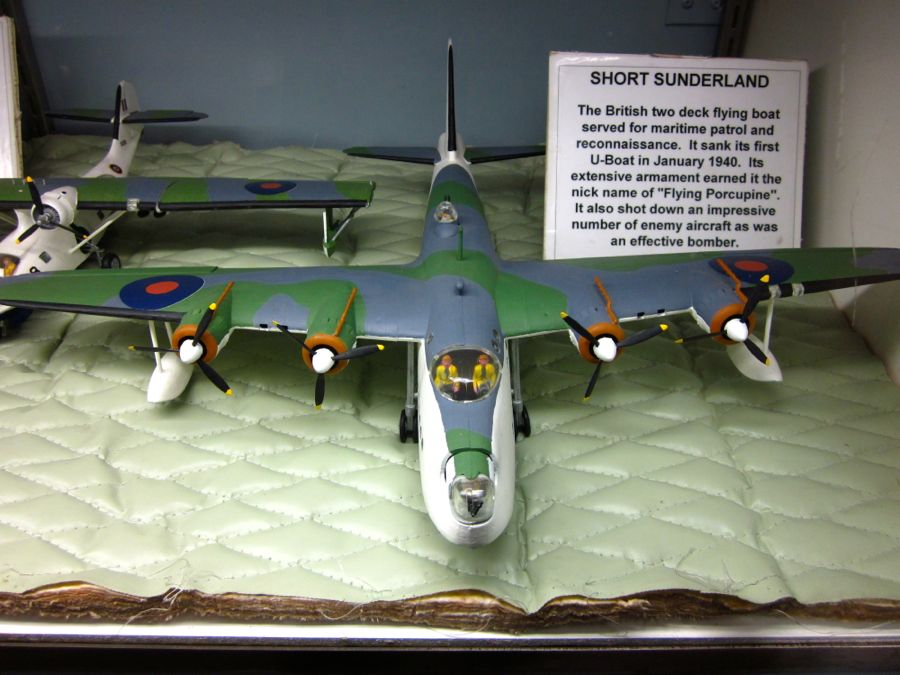
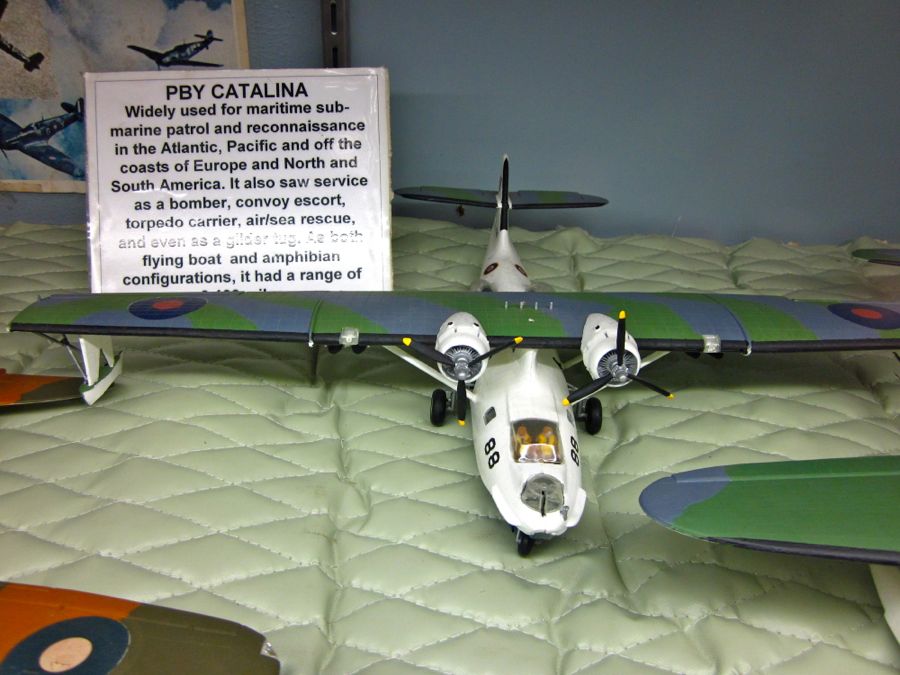
Launched on Paul's birthday in 1944
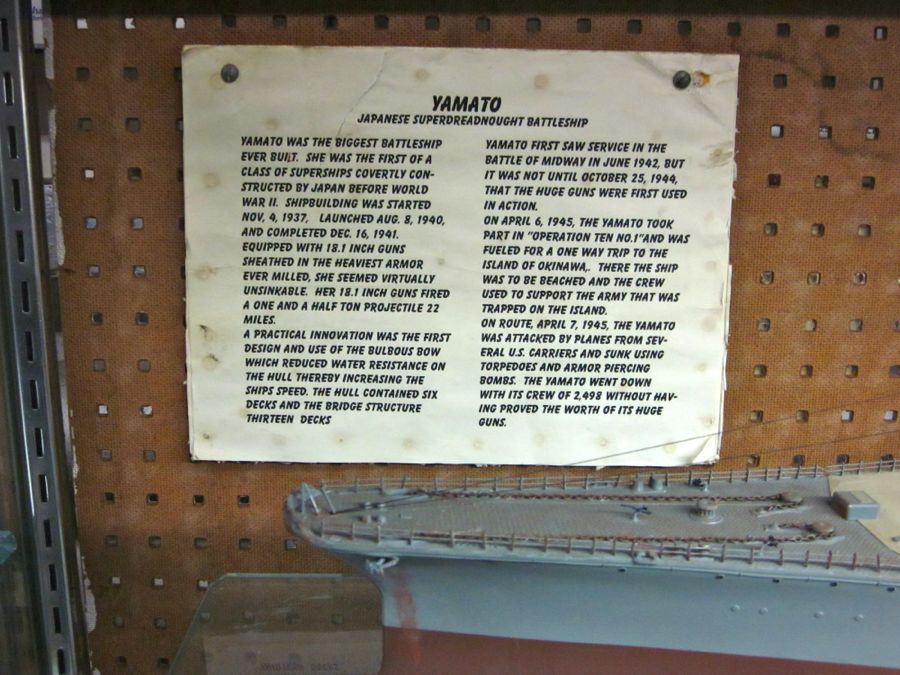
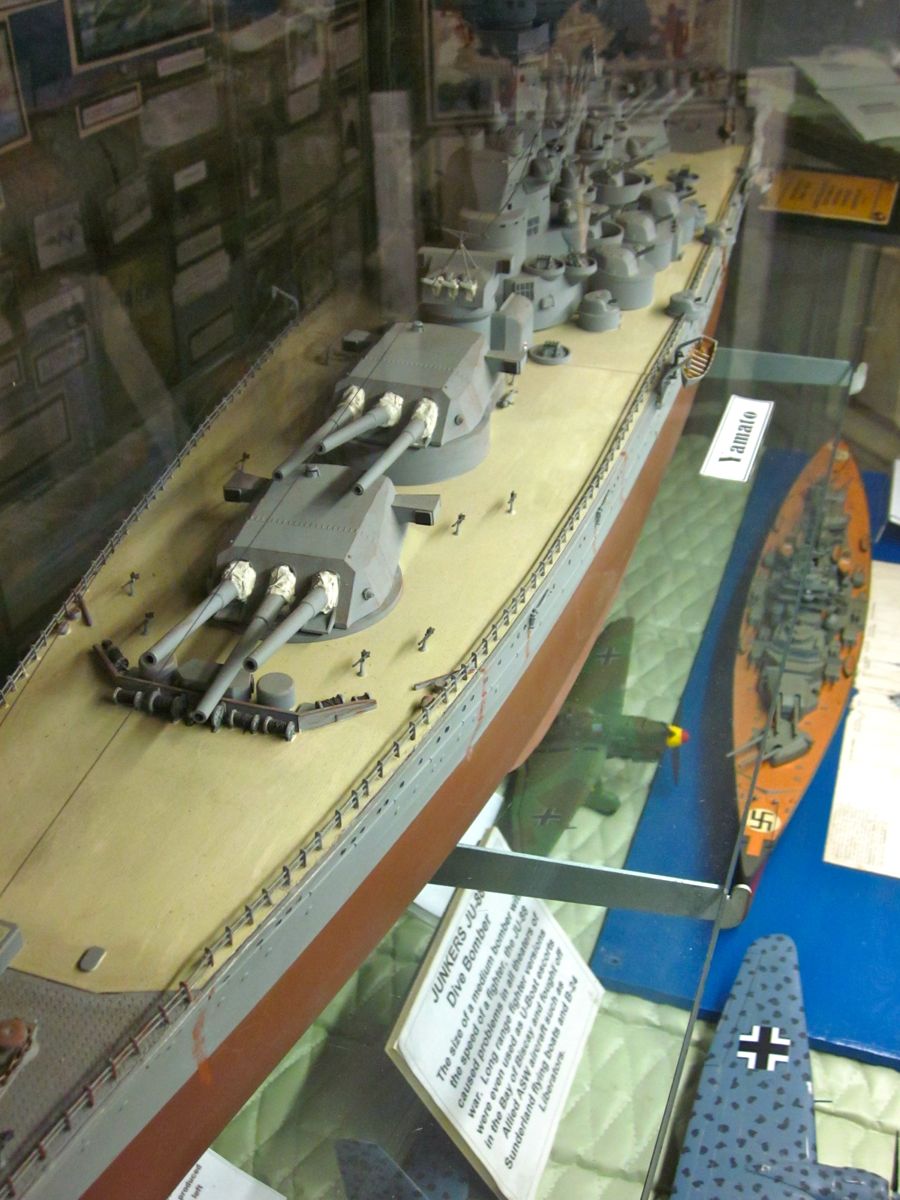
A massive vehicle
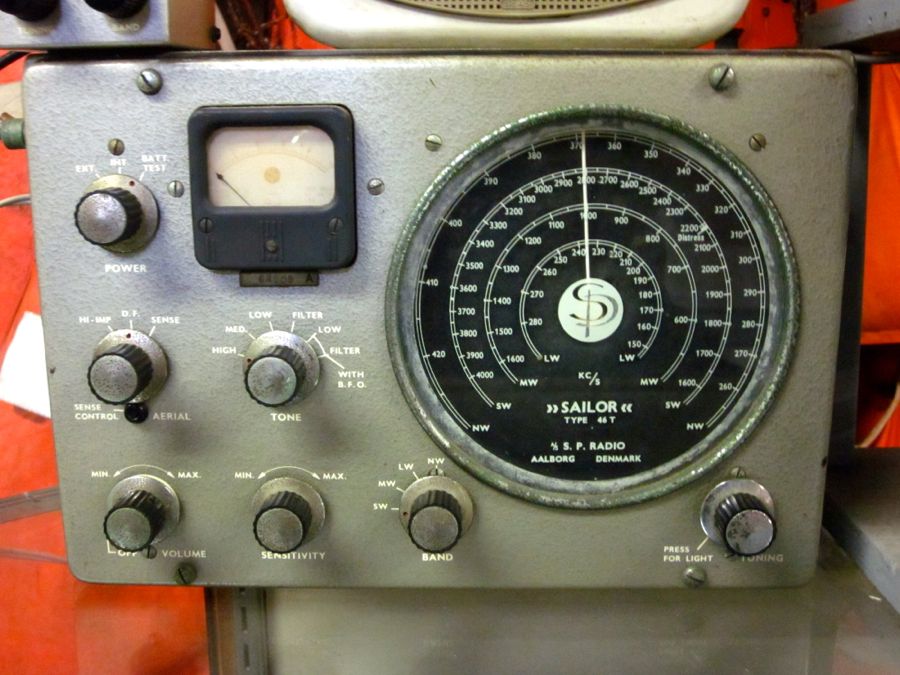
All band radio used on many ships in the 1960's
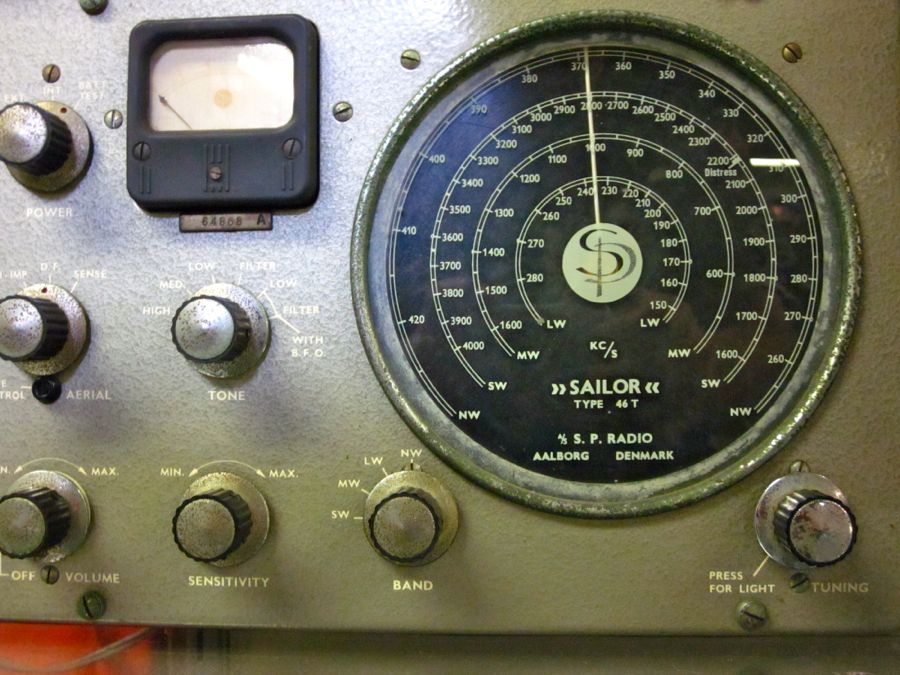
It had transistors inside....
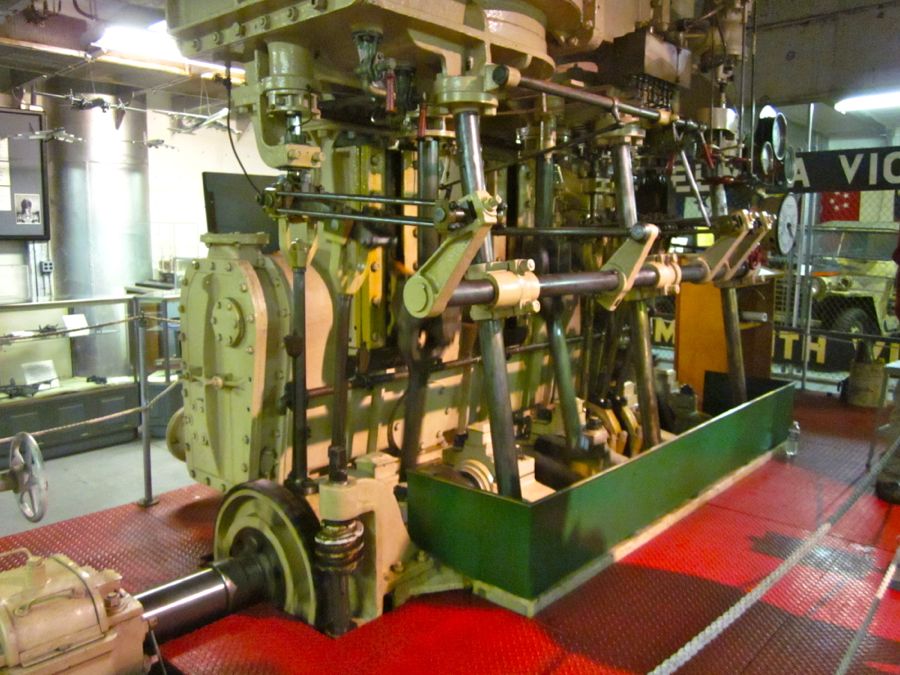
The Engine
was used in a movie
Lunch was about over...
We were still being
g followed
One more ballet move....
Back On Deck He Head For The Wine
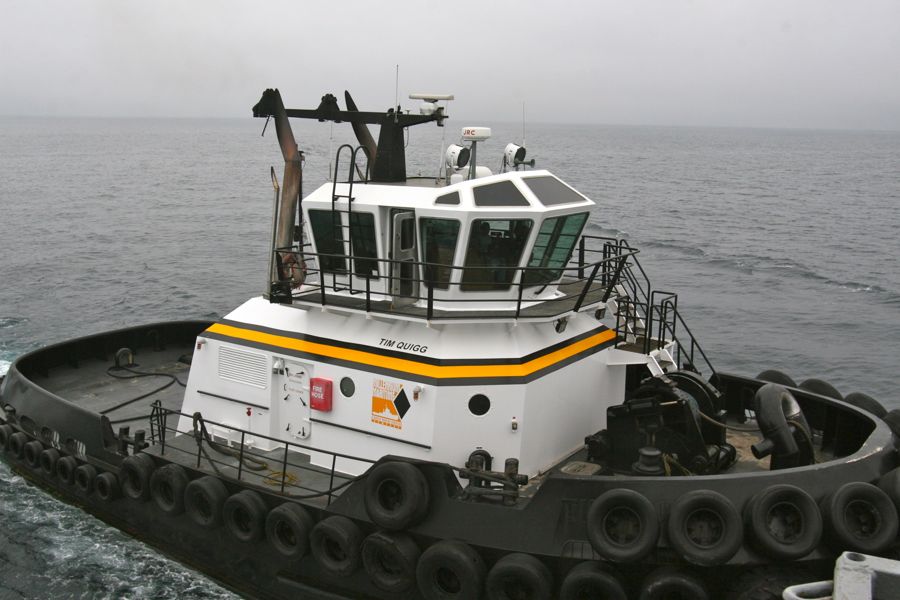
Our friend was still around
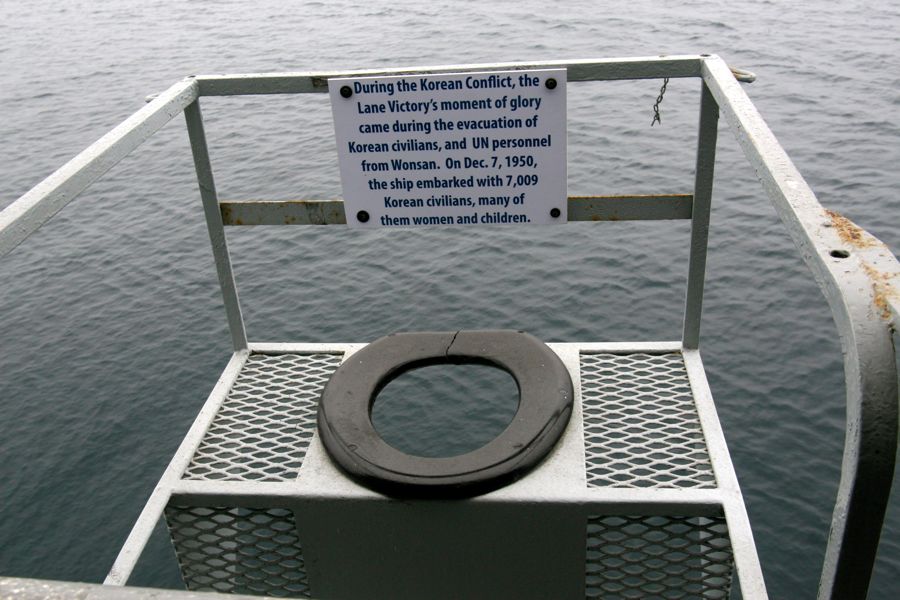
What happens when one has 6,000 women on board at one time
We Decided To Check In Before Visiting The Museum In Hold #4
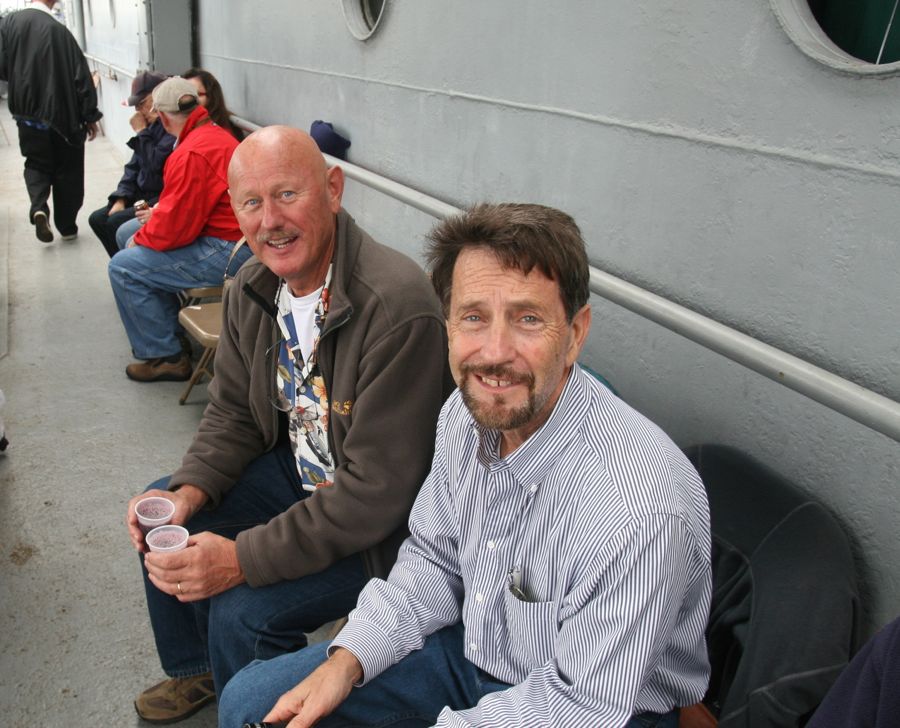
Hans and Bob were doing wine tasting....
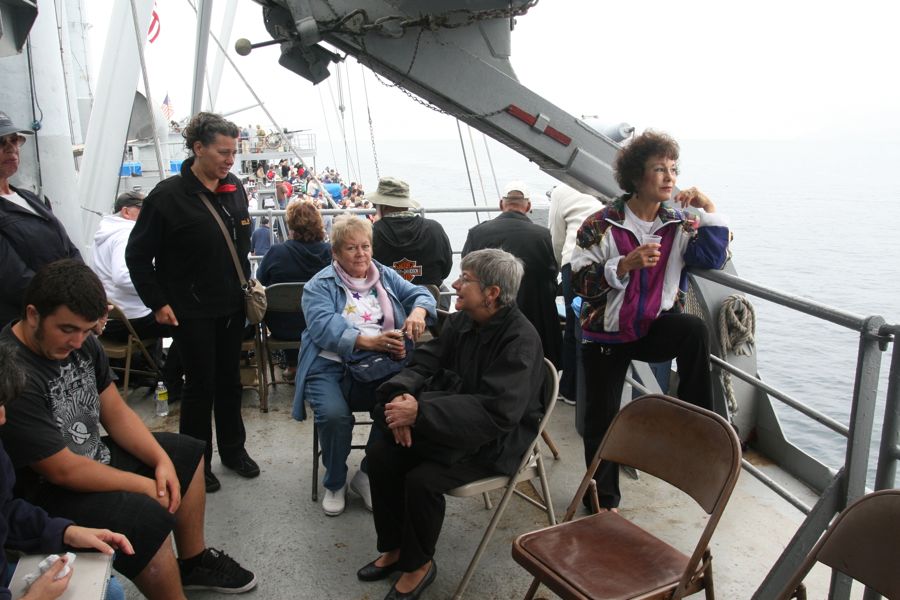
The chitting and chatting was going full speed
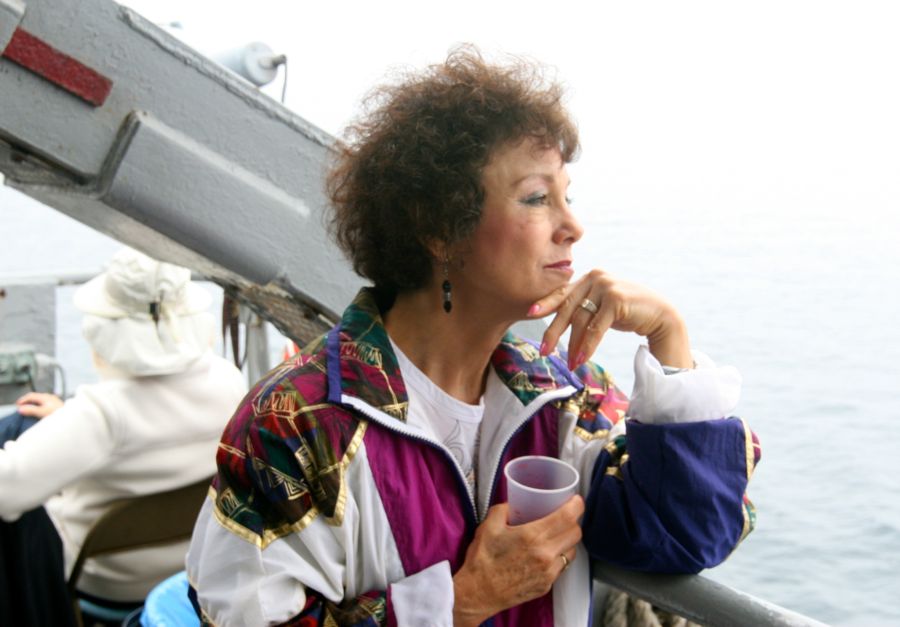
Donna contemplates the sea
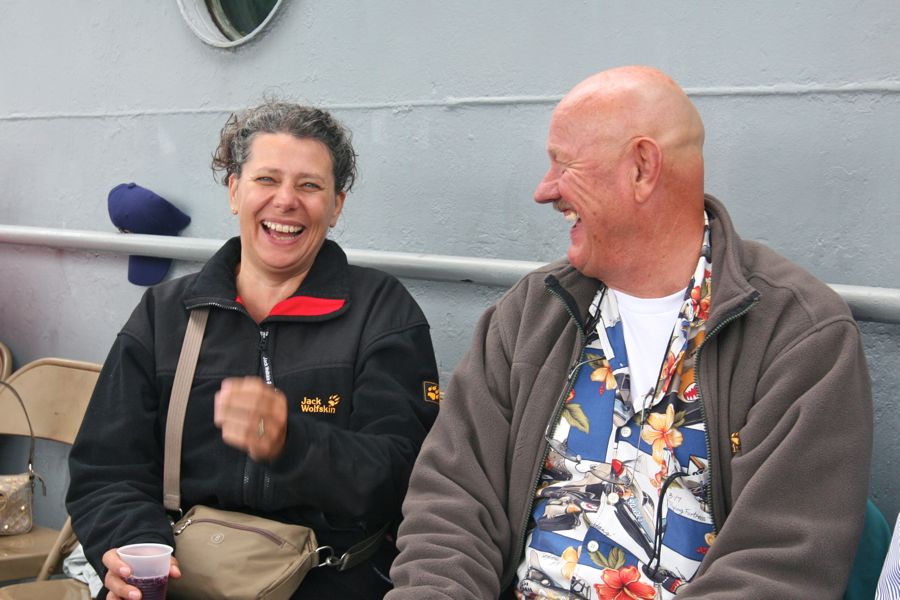
Many hours of chuckles this day
We Captured Cornell For The Fifteen Year Straight... We Always Give Him Back
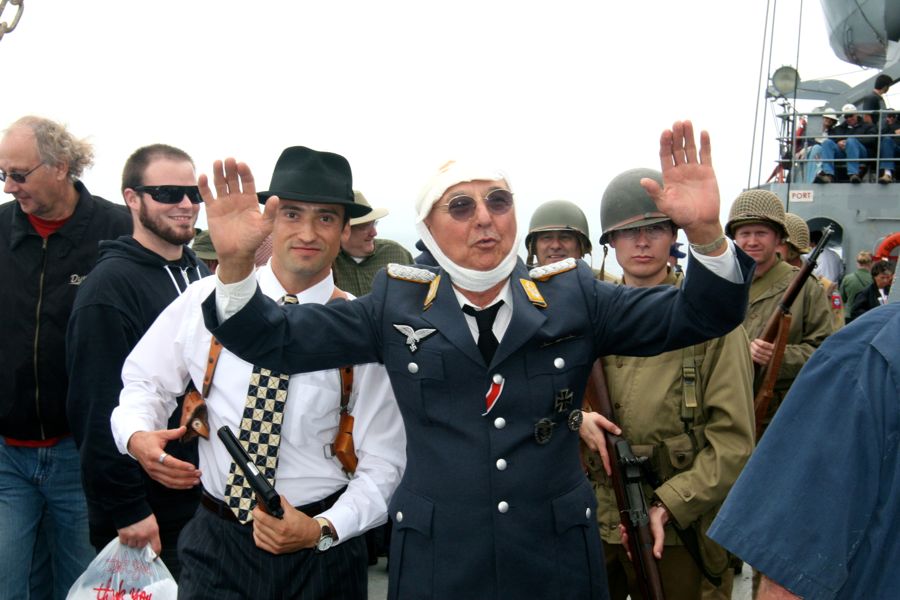
The FBI caught our man
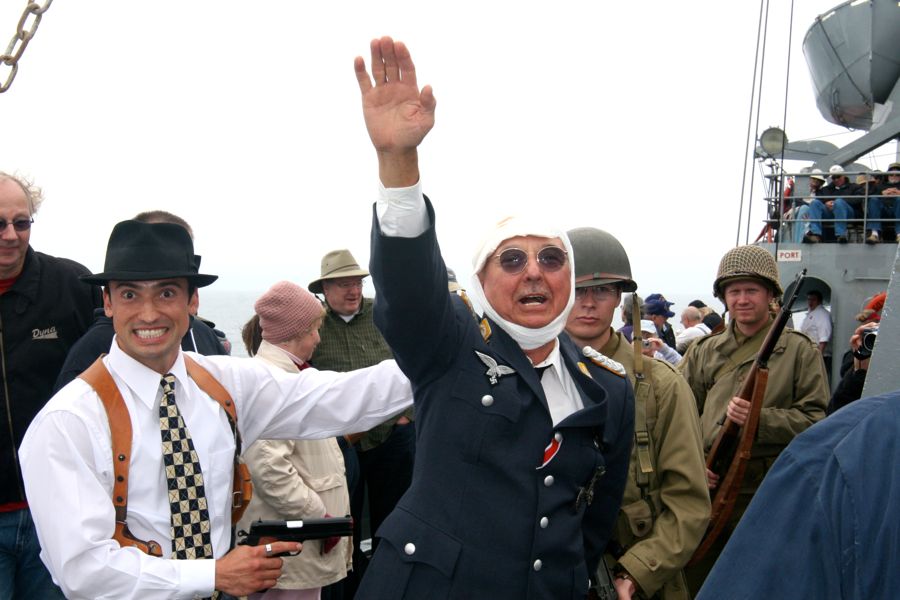
Heil!
Did You Know? - The Nazi salute, or Hitler salute (German: Hitlergruß, literally Hitler Greeting or Deutscher Gruß, German Greeting), was a gesture of greeting in Nazi Germany usually accompanied by saying, Heil Hitler! ["Hail Hitler!"], Heil, mein Führer ["Hail, my leader!"], or Sieg Heil! ["Hail victory!"]. Characteristic of a cult of personality, it was adopted in the 1930s by the Nazi Party to signal obedience to the party's leader Adolf Hitler and to glorify the German nation and later the war effort. The salute was mandatory for civilians[1] but optional for military personnel, where the traditional military salute was retained until shortly after the failed assassination attempt on Hitler in 1944. Currently, use of this form of greeting constitutes a criminal offense in Germany, Austria and the Czech Republic.
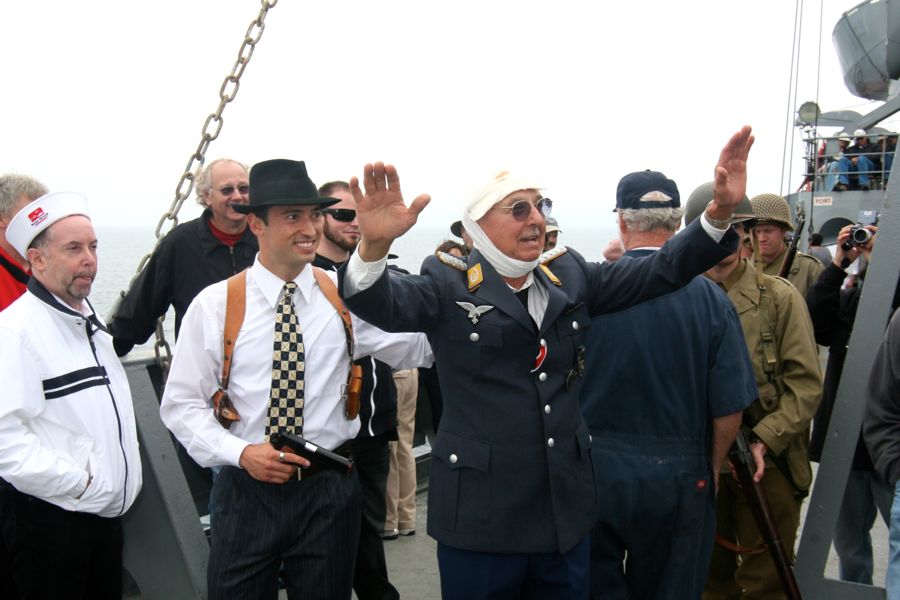
Cornell plays an excellent spy
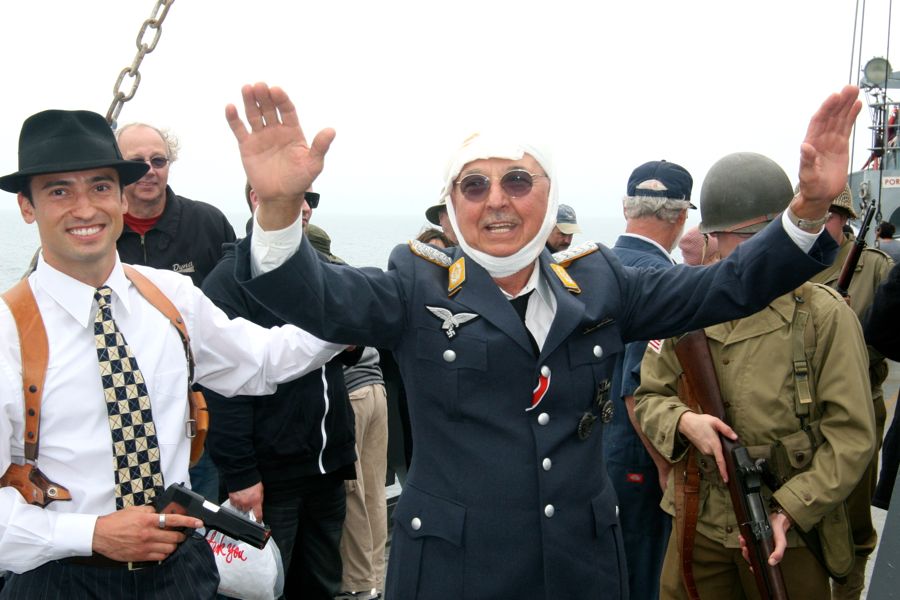
Nice hat
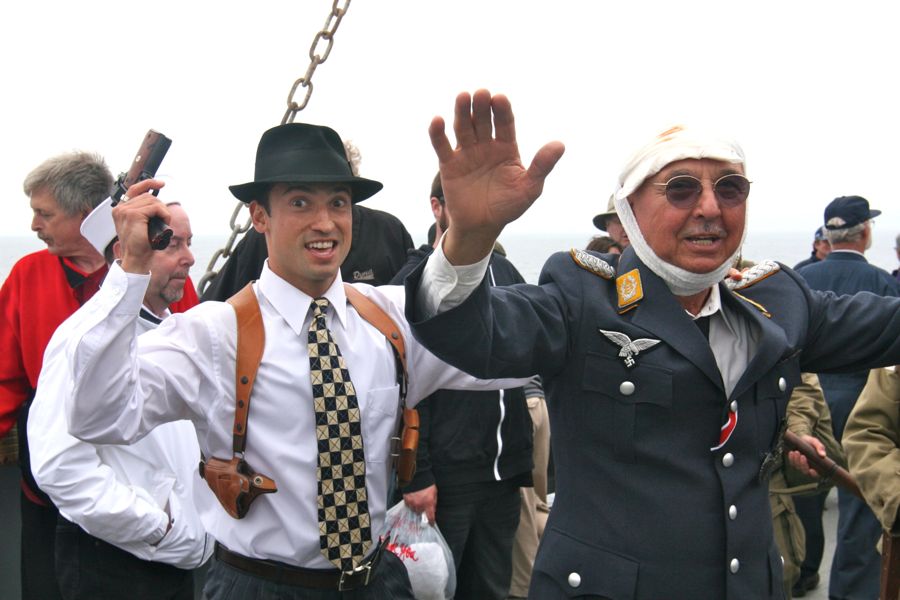
Onward spy....
The Guns Open Fire... On Catalina???
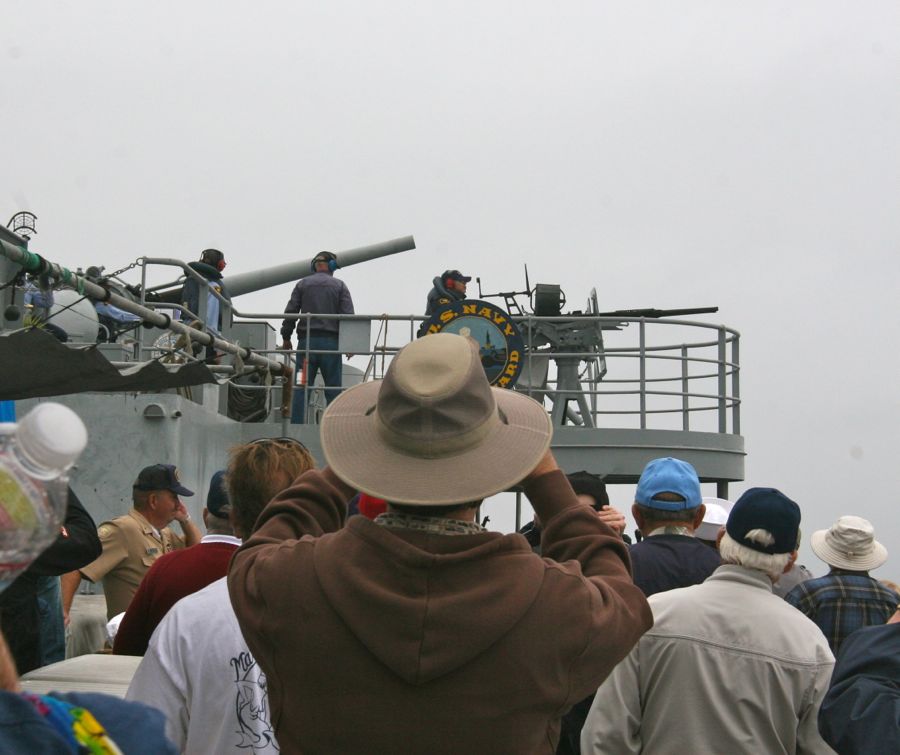
Outfitted with Propane and oxygen, they do make a lot of noise
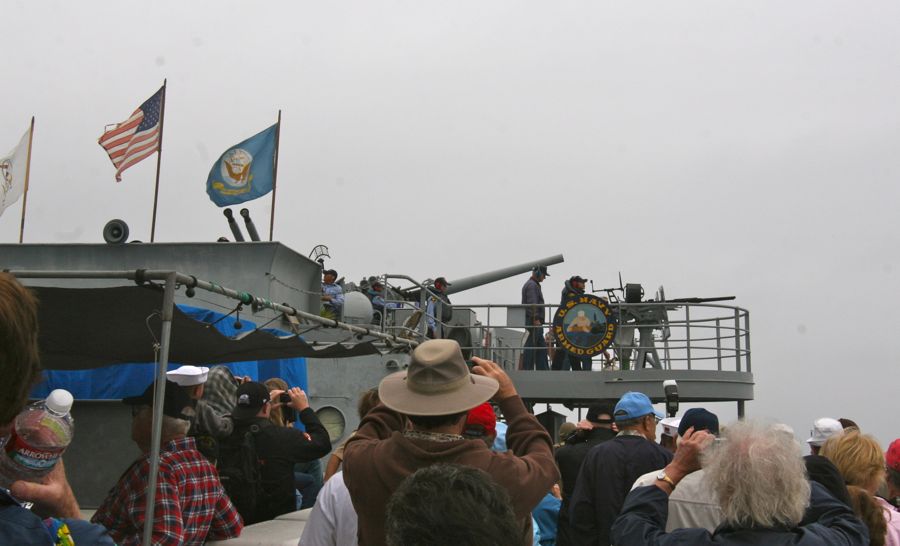
It must have been noisy with eight of these guns going at once
The Stories Were Provided So We Would Remember
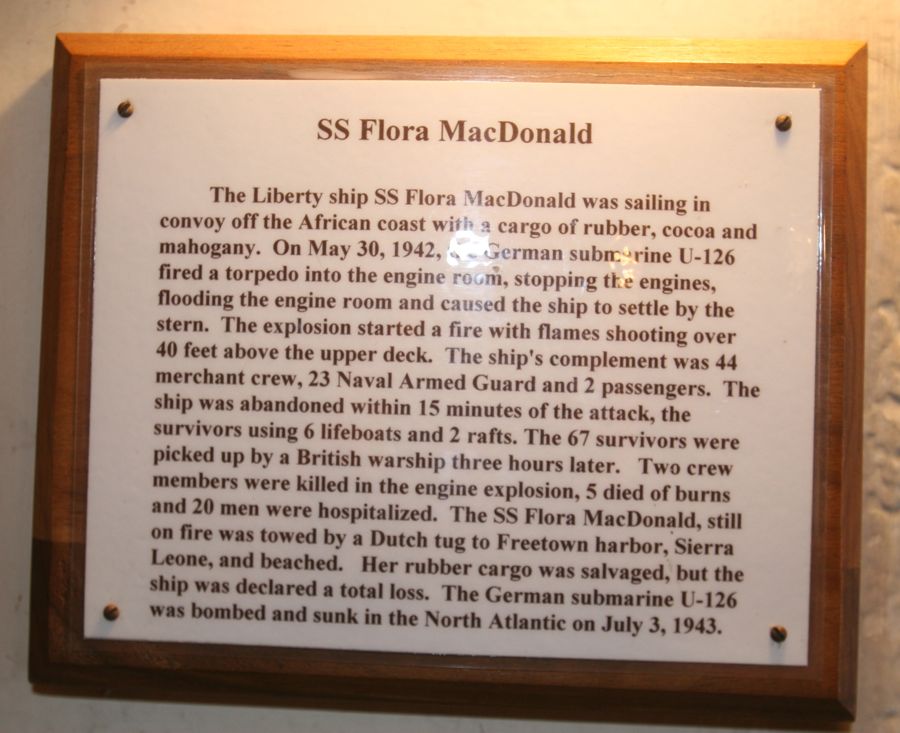
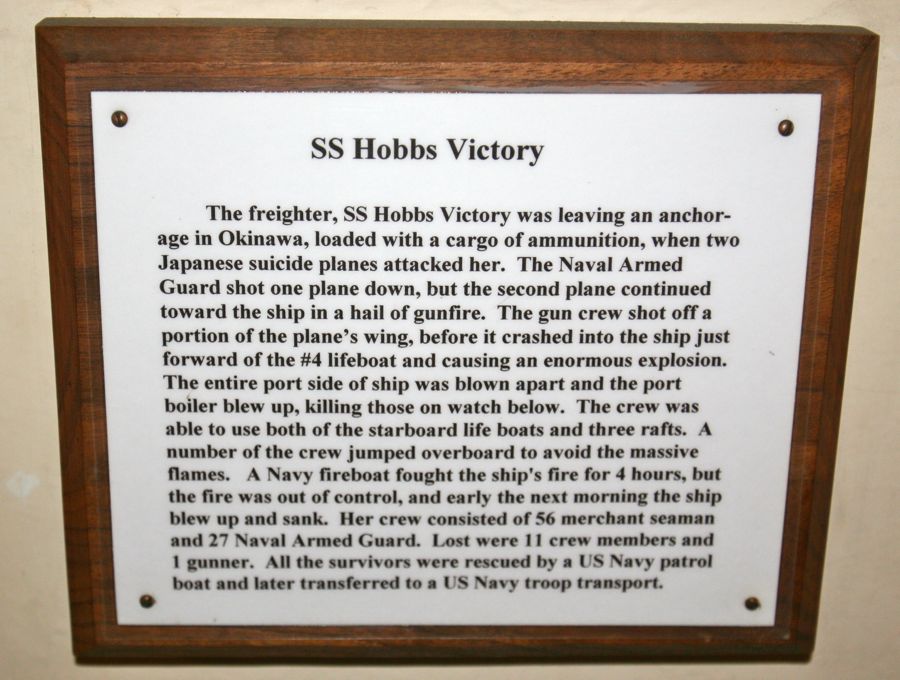
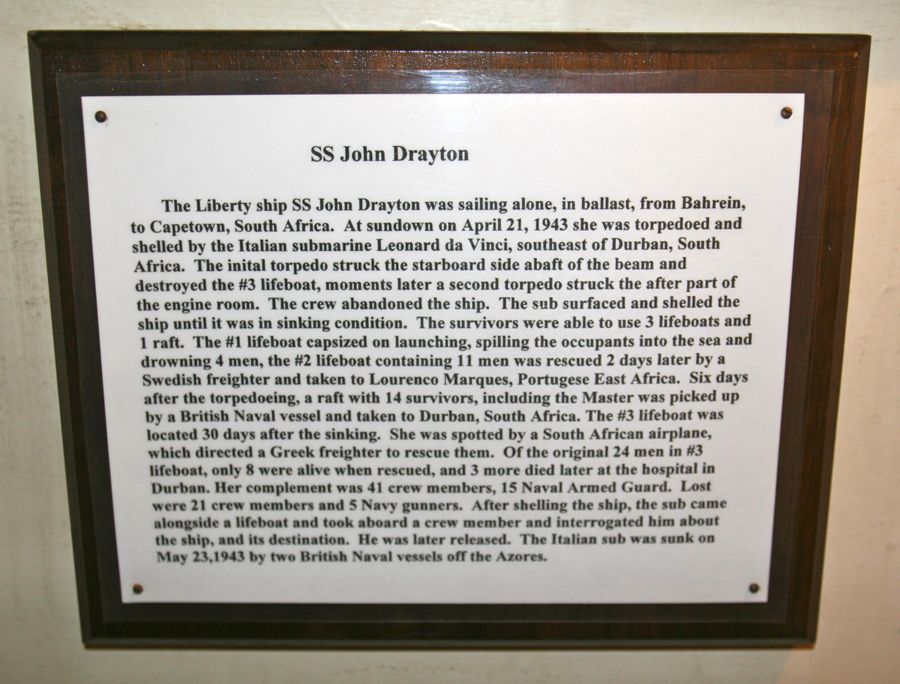
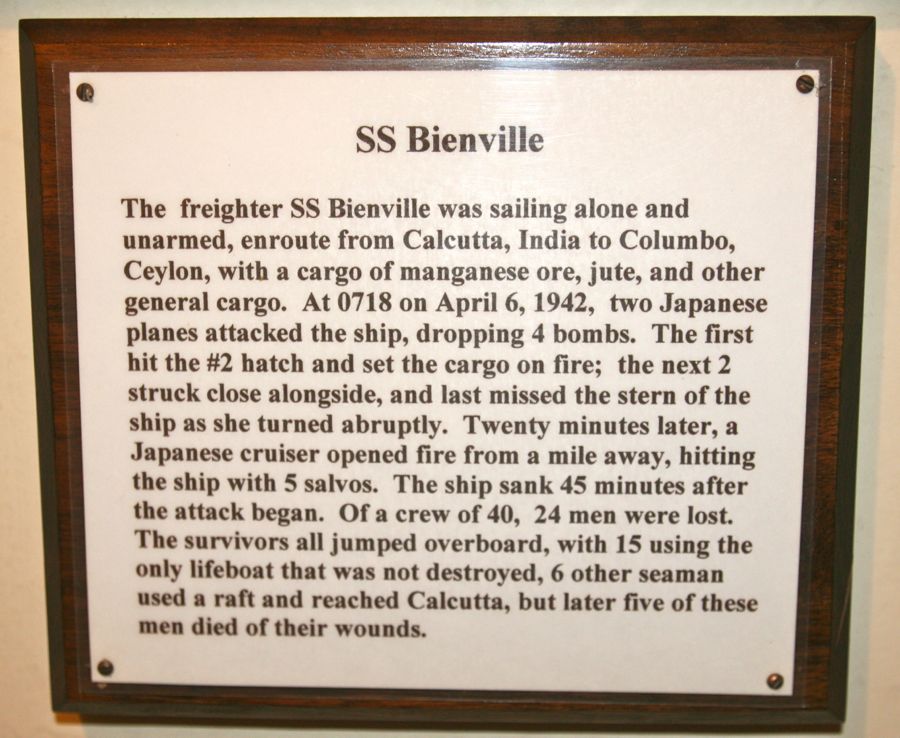


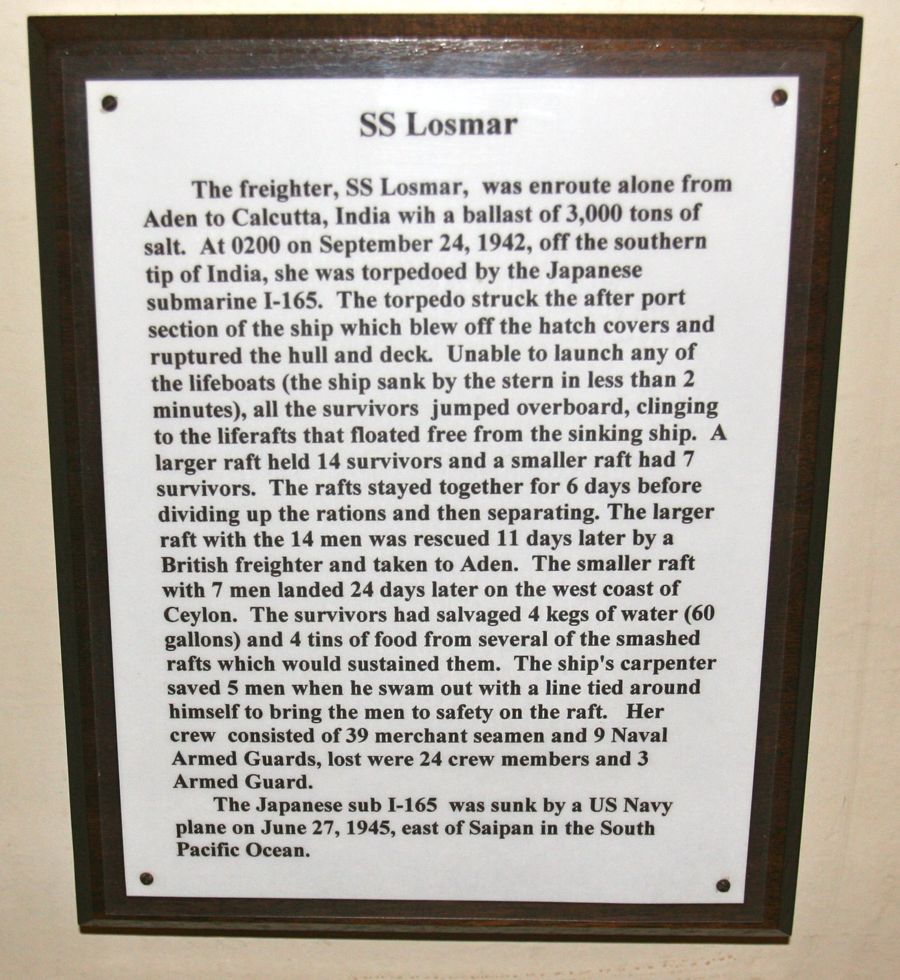
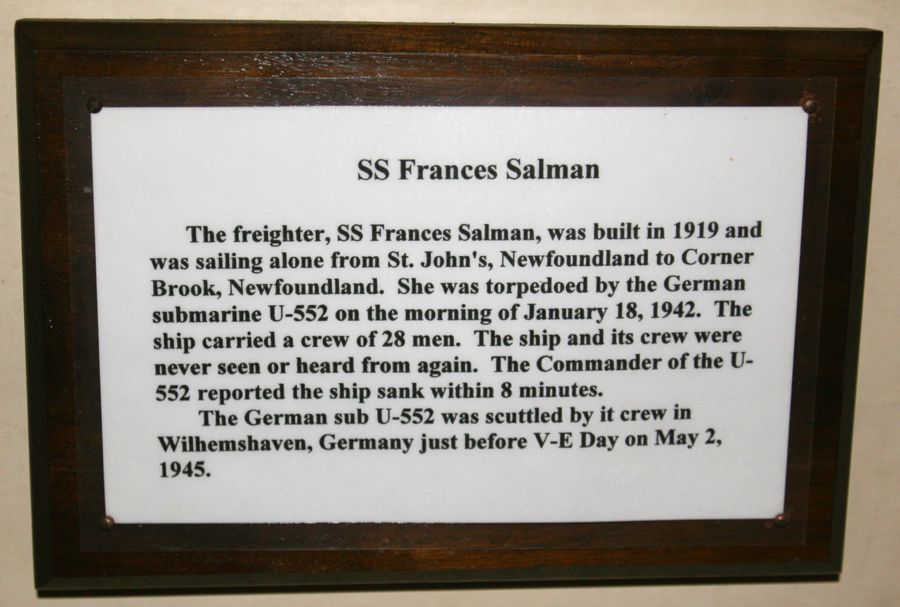
We Returned To Our Location
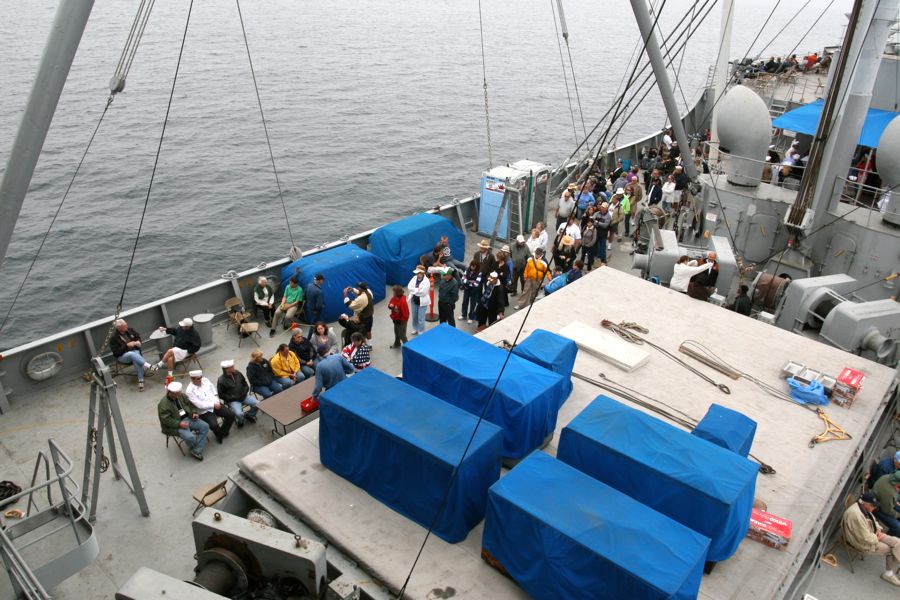
The line for the Engine Room tour was quite long
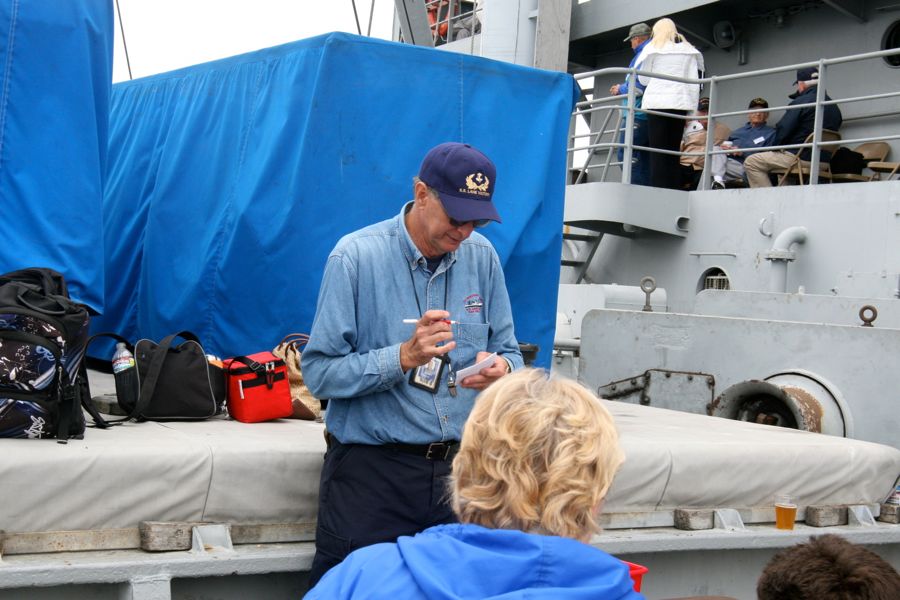
He has to repeat his story fifty times this day... But he gets better each time
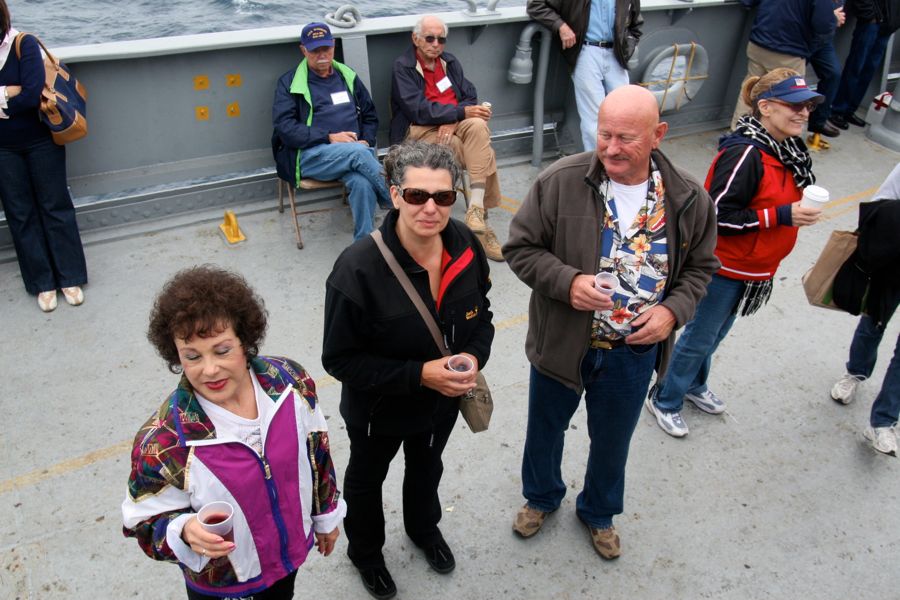
Wine time... Is any time
Down We Go Into Hold #4

Down we go...
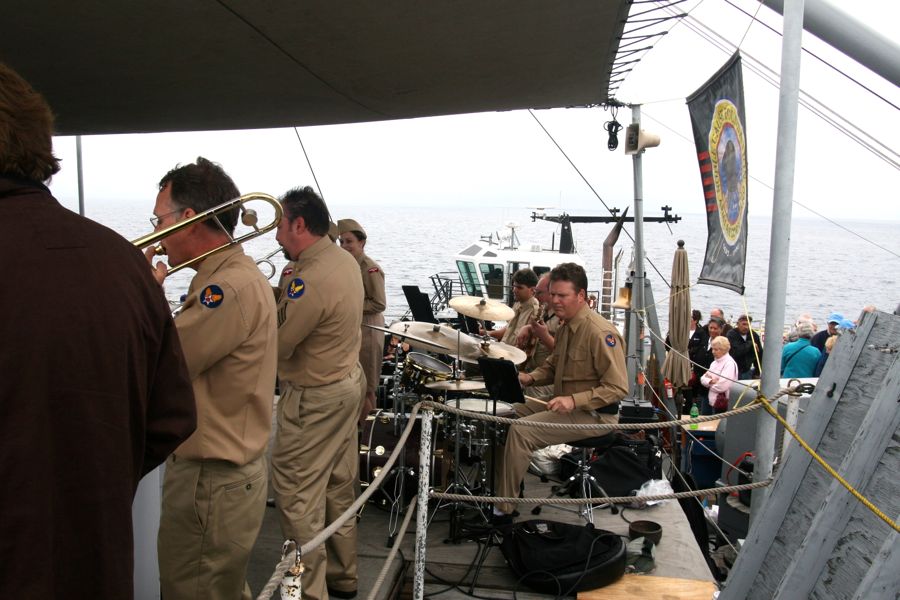
The band plays on top of Hold #4
Did You Know? - A ship's hold is a space for carrying cargo. Cargo in holds may be either packaged in crates, bales, etc., or unpackaged (bulk cargo). Access to holds is by a large hatch at the top. Ships have had holds for centuries; an alternative way to carry cargo is in standardised shipping containers, which may be loaded into appropriate holds or carried on deck.
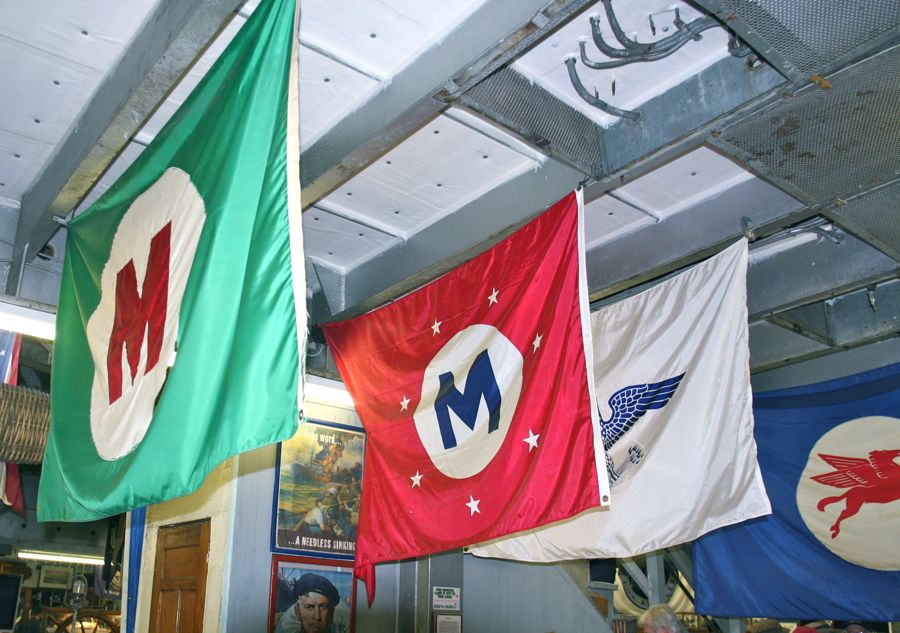
Can you identify the flags???
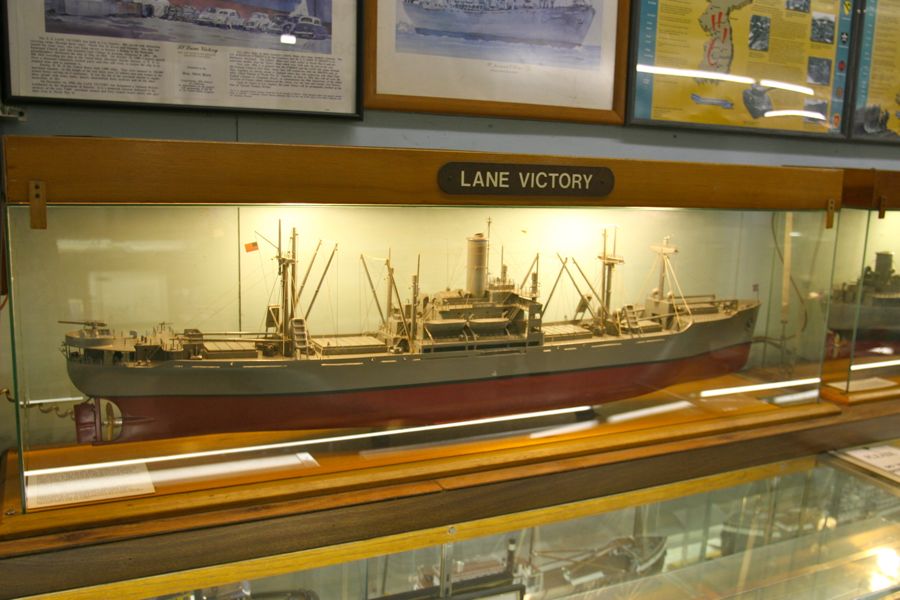
Great models are in the museum
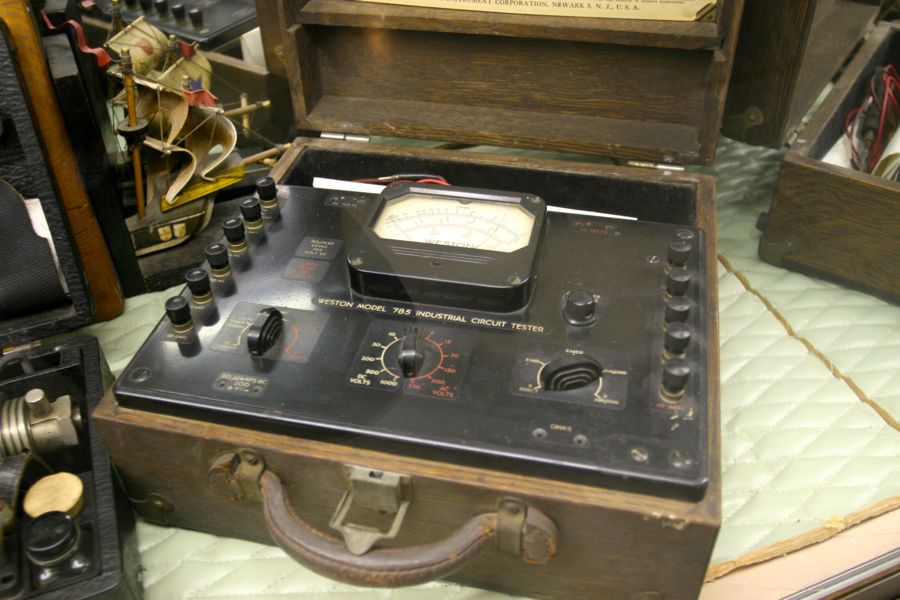
WWII era circuit tester
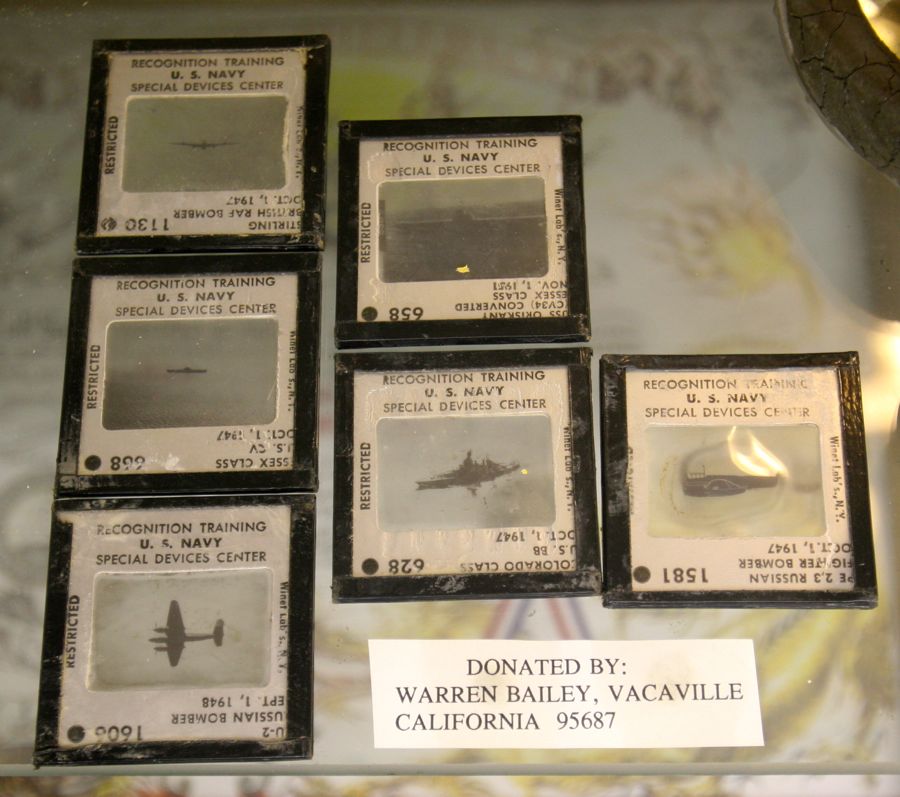
Training slides for identify friend and foes alike
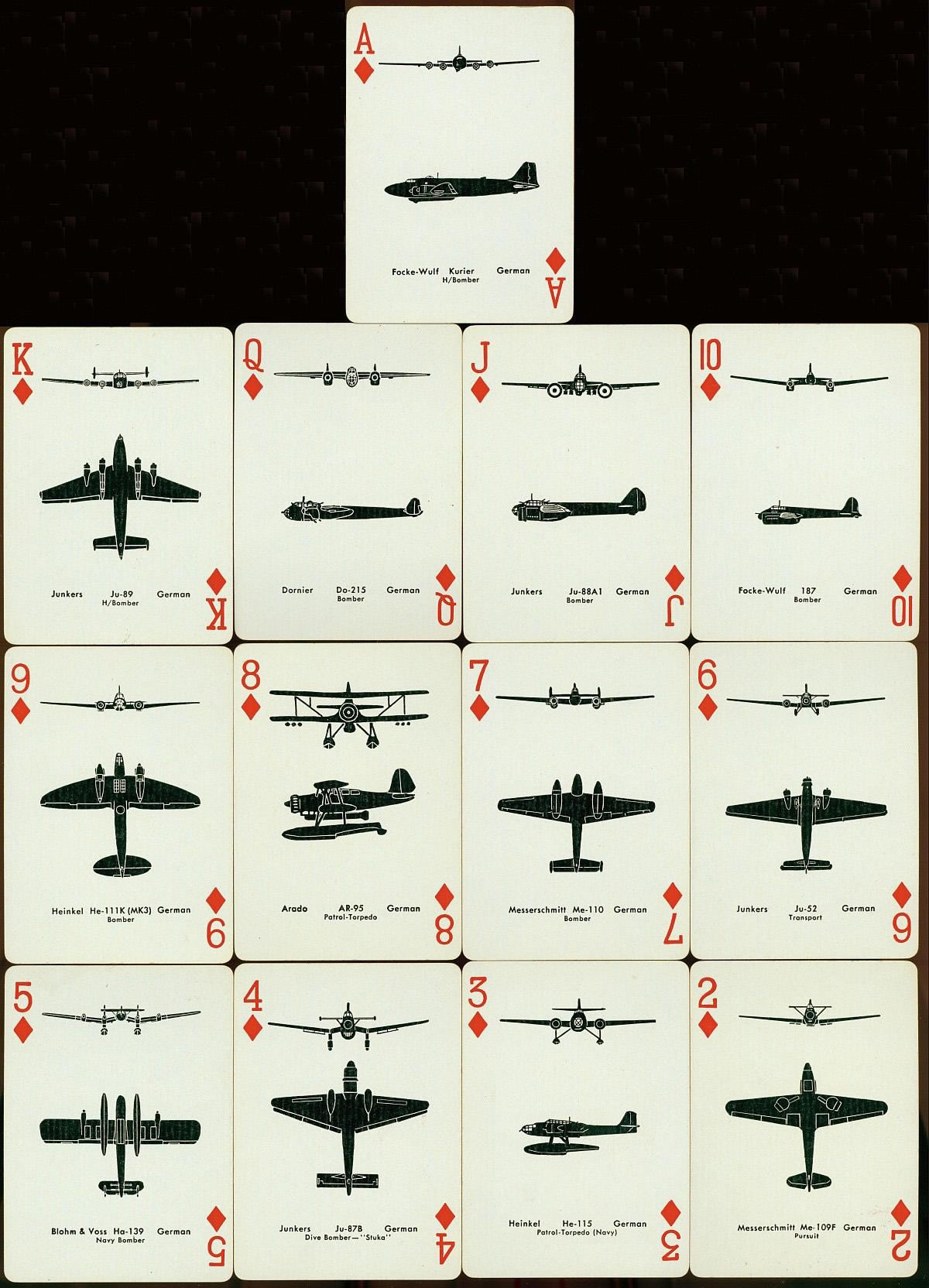
Playing cards were provided to Civil Defense and military personnel to identify German planes
Meanwhile Back On Deck Two Of "The House"

The house is the cabin/living areas
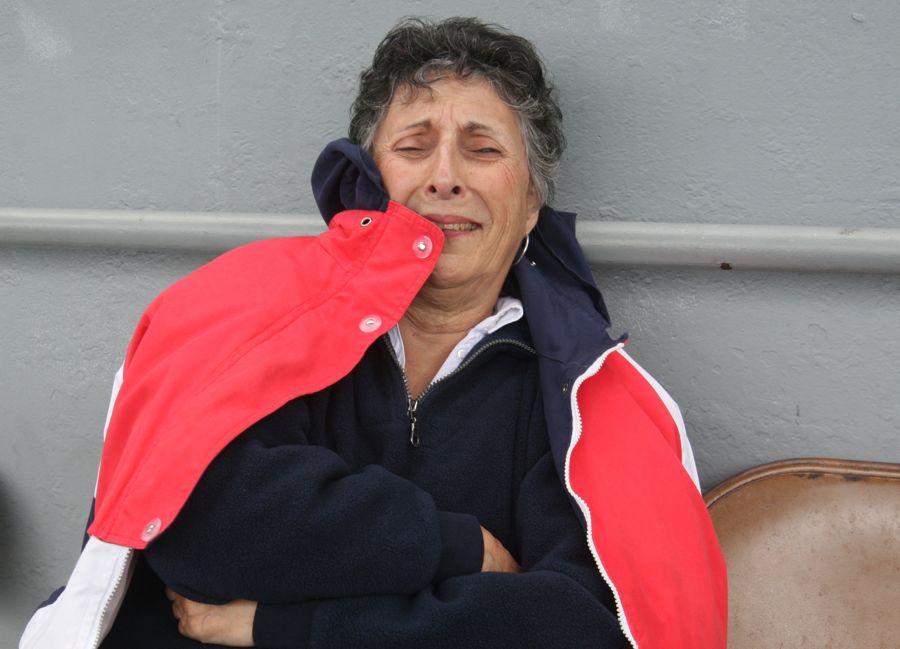
Irene is protecting her ears from making whistling sounds

Mr. Hollywood
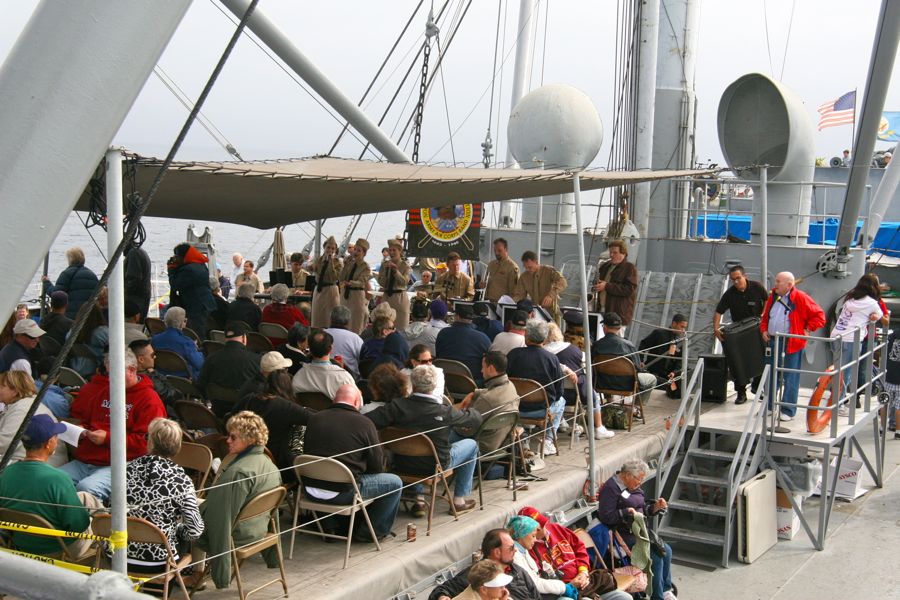
The band plays on...
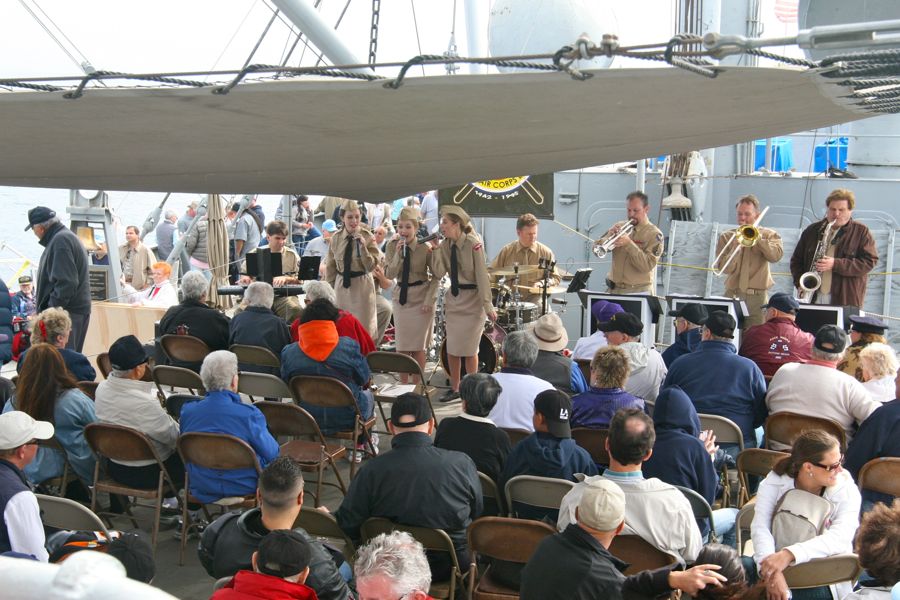
The Andrews Sisters do a MAGNIFICENT job all day
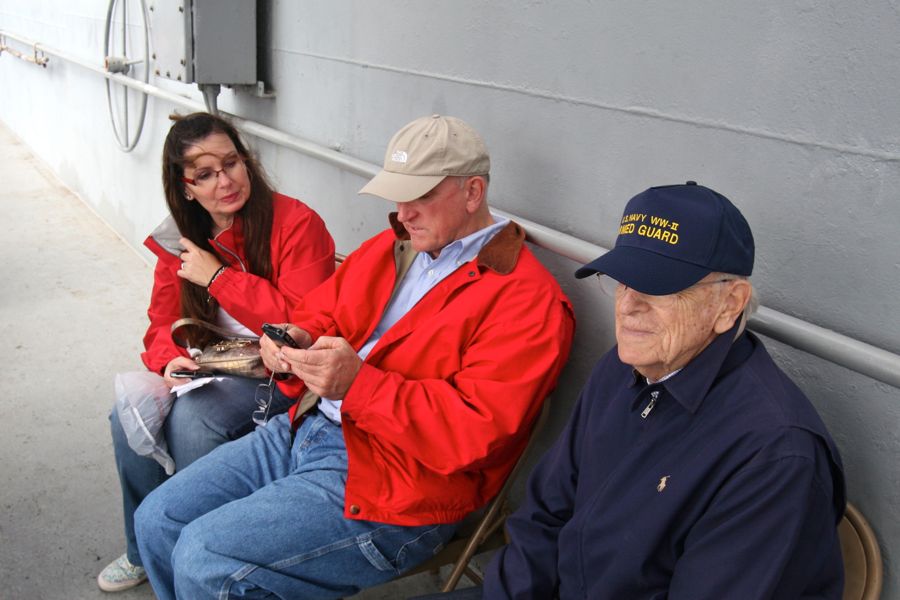
Jim and family taking it all in
The Music Is Just Too Enticing
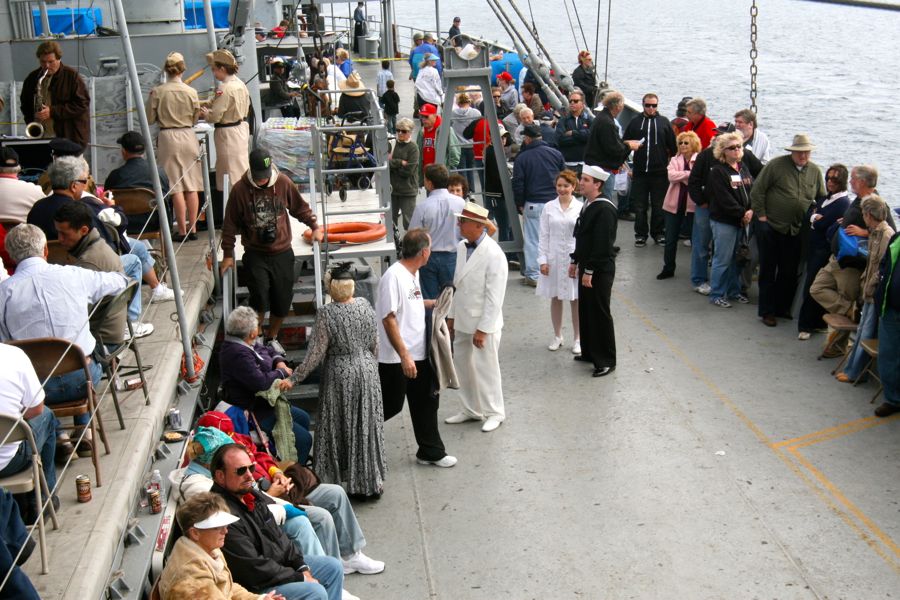
Check the Nurse And Sailor
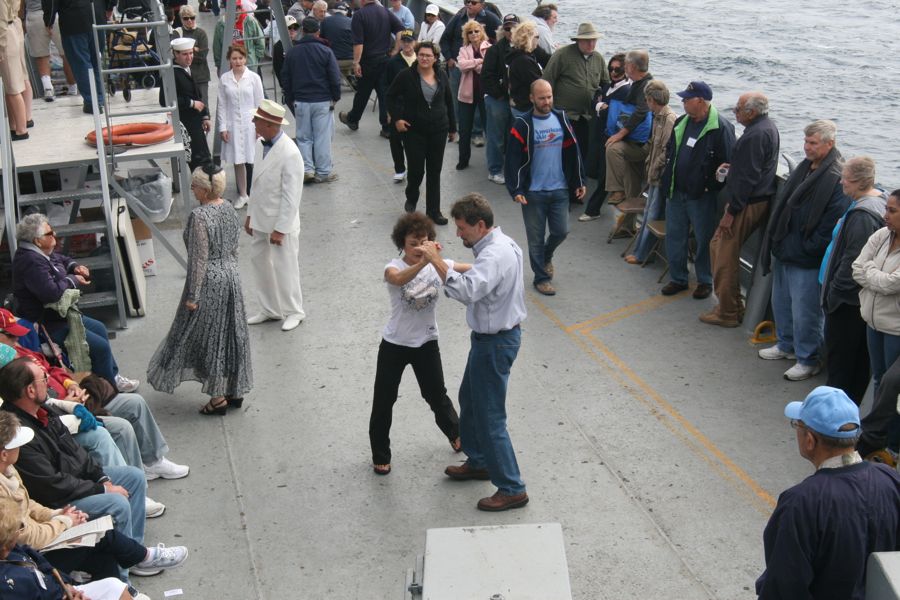
Time to dance....
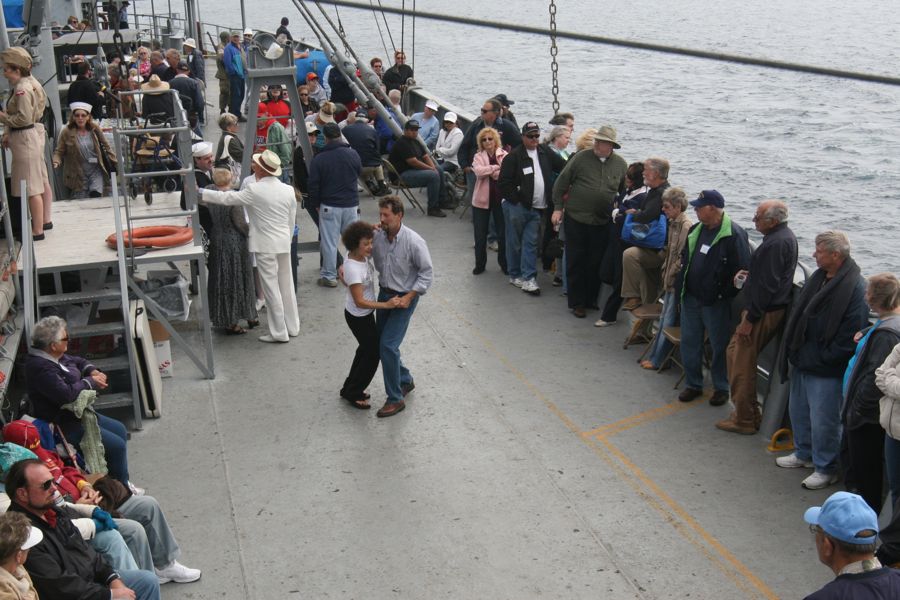
Next time Paul is going to pass around a tin cup....
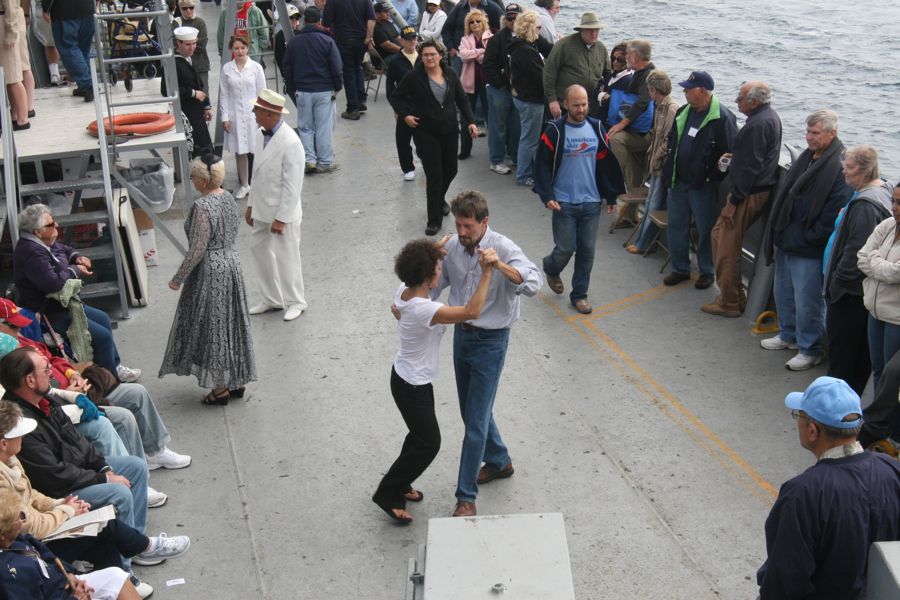
The ship and the Zaitz are rocking
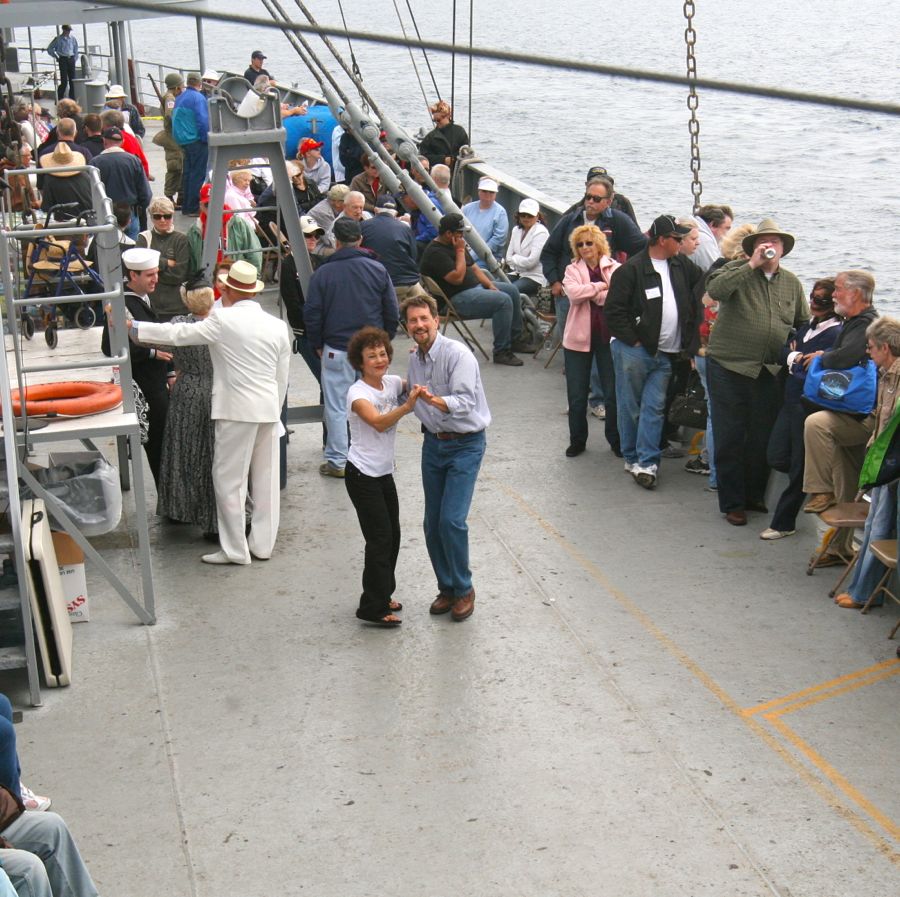
They discover he hidden cameraman
